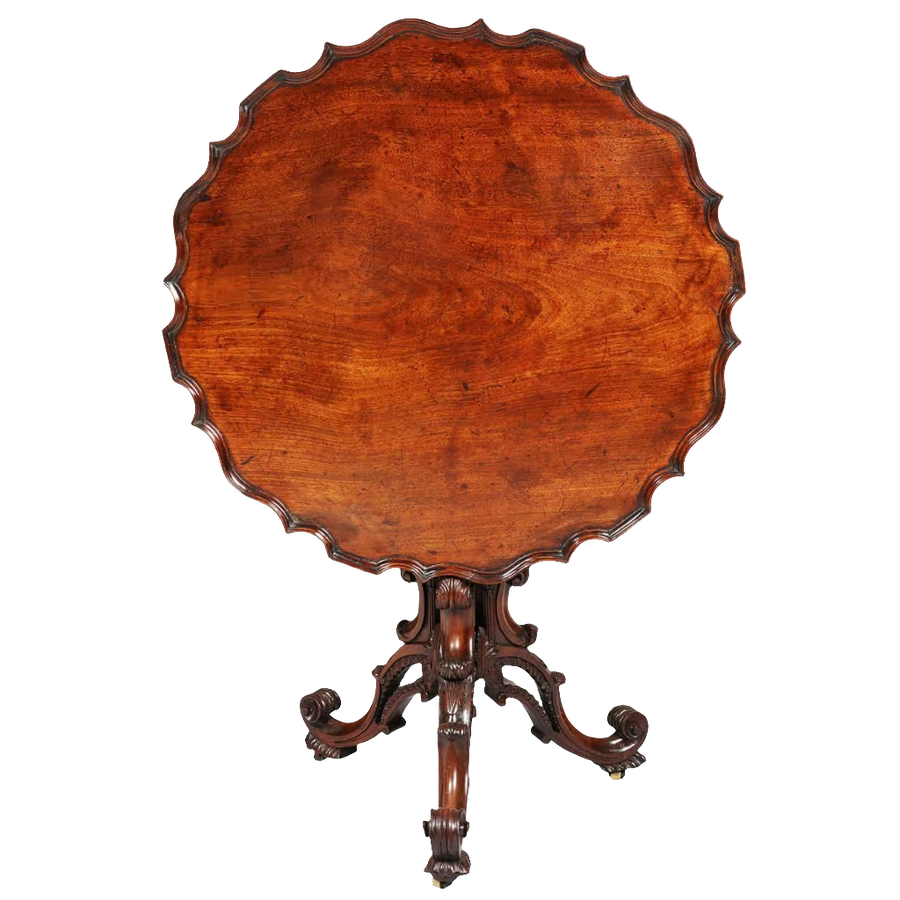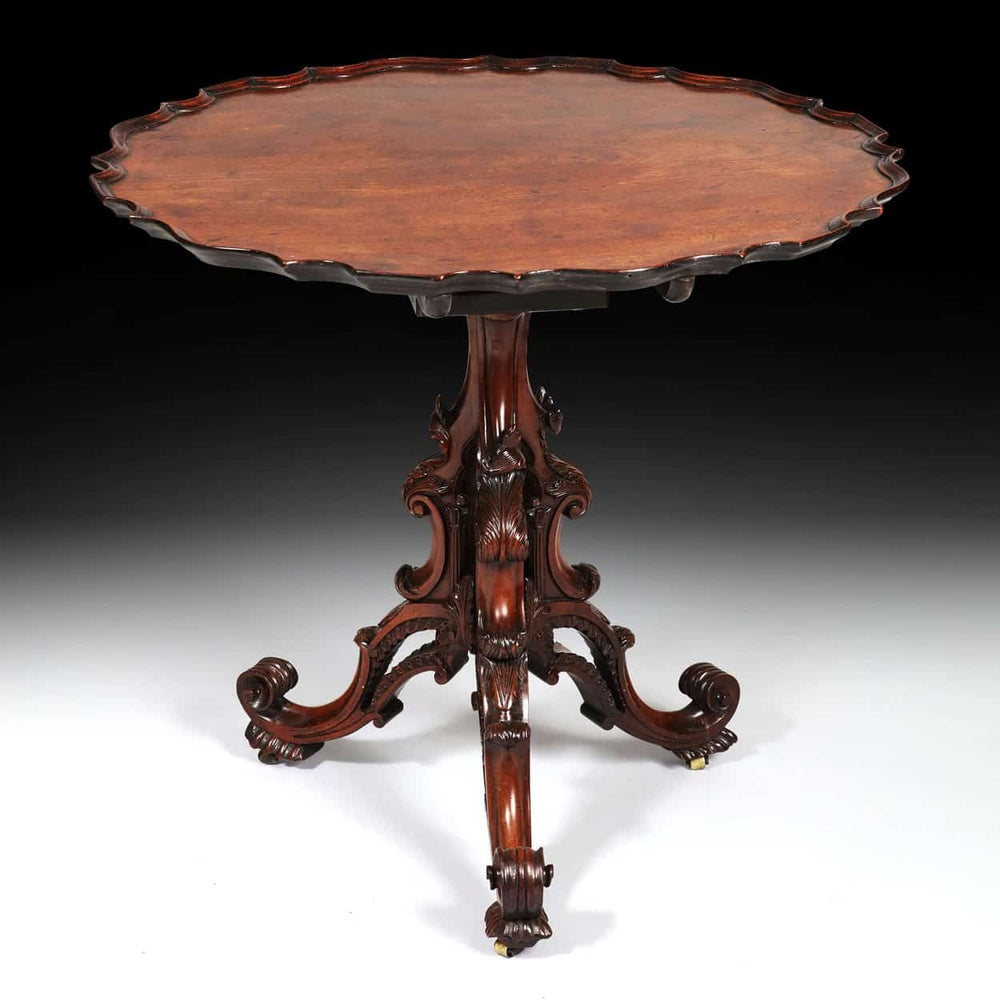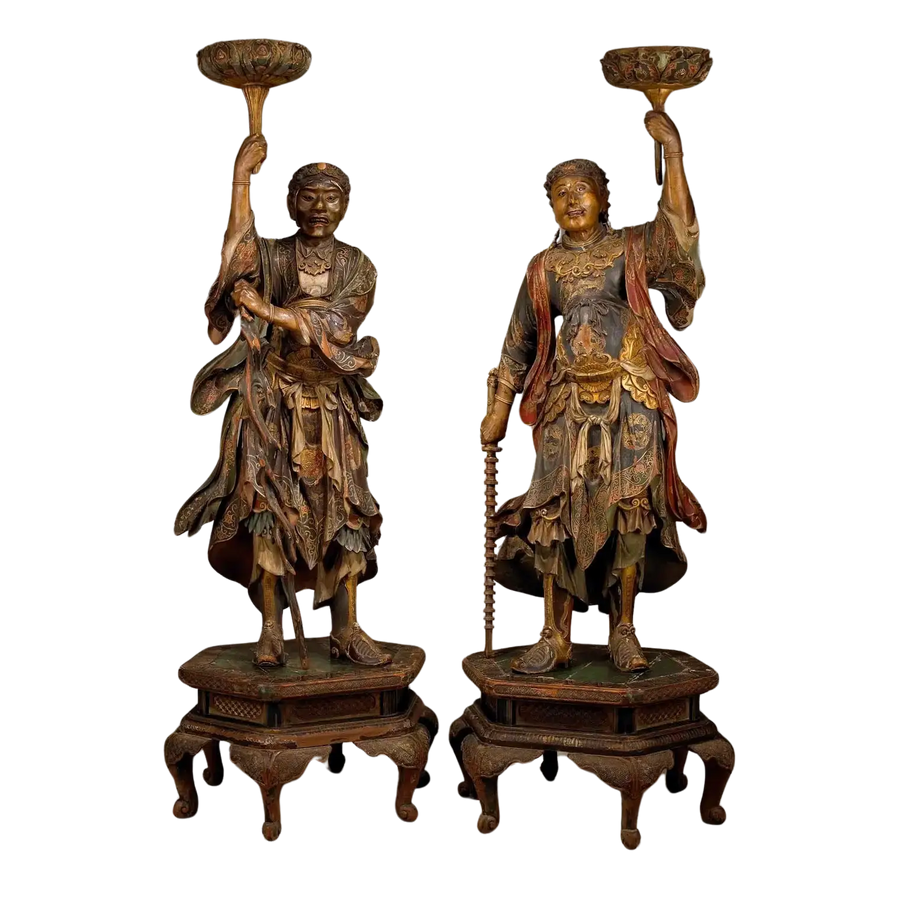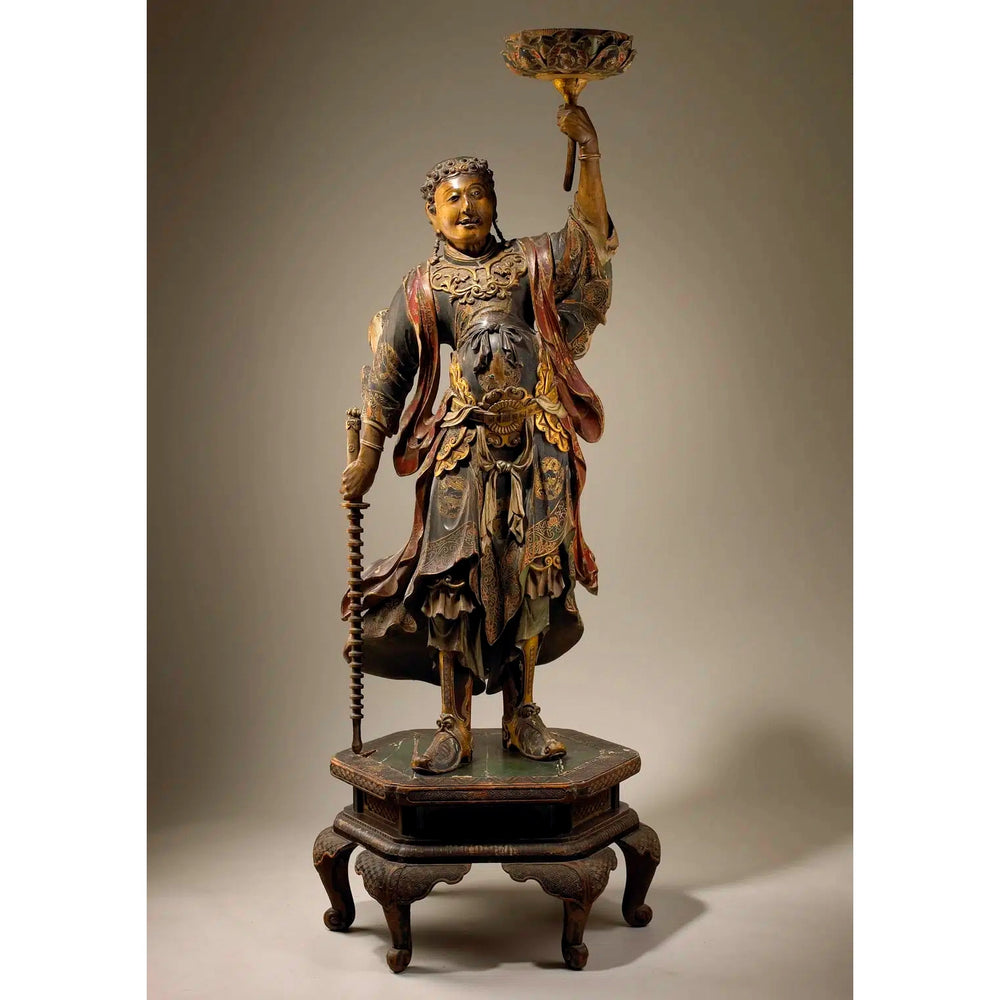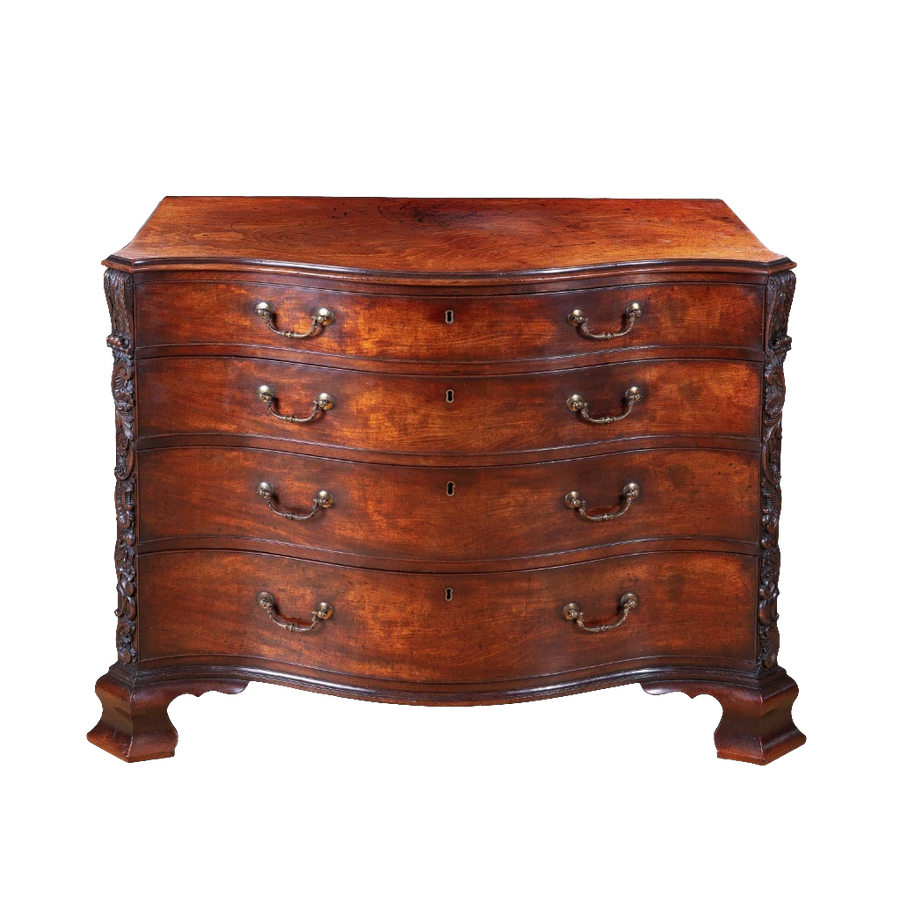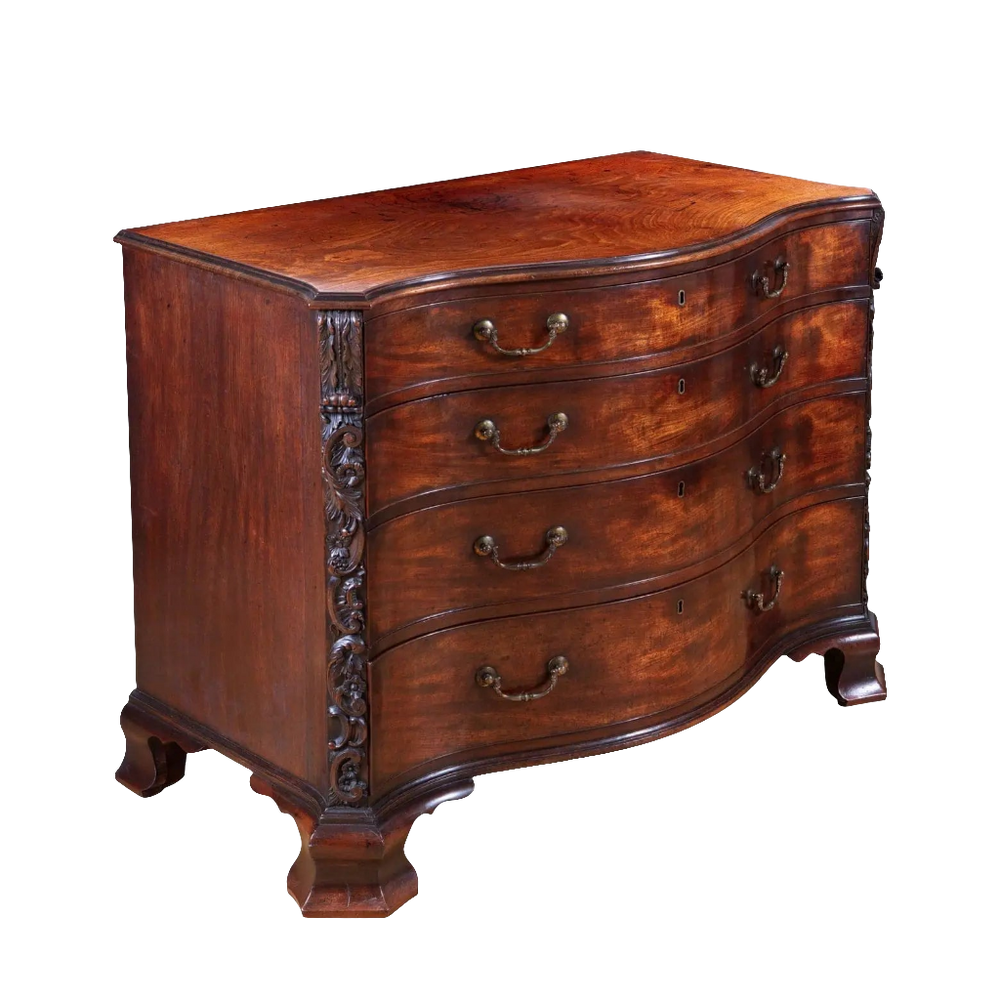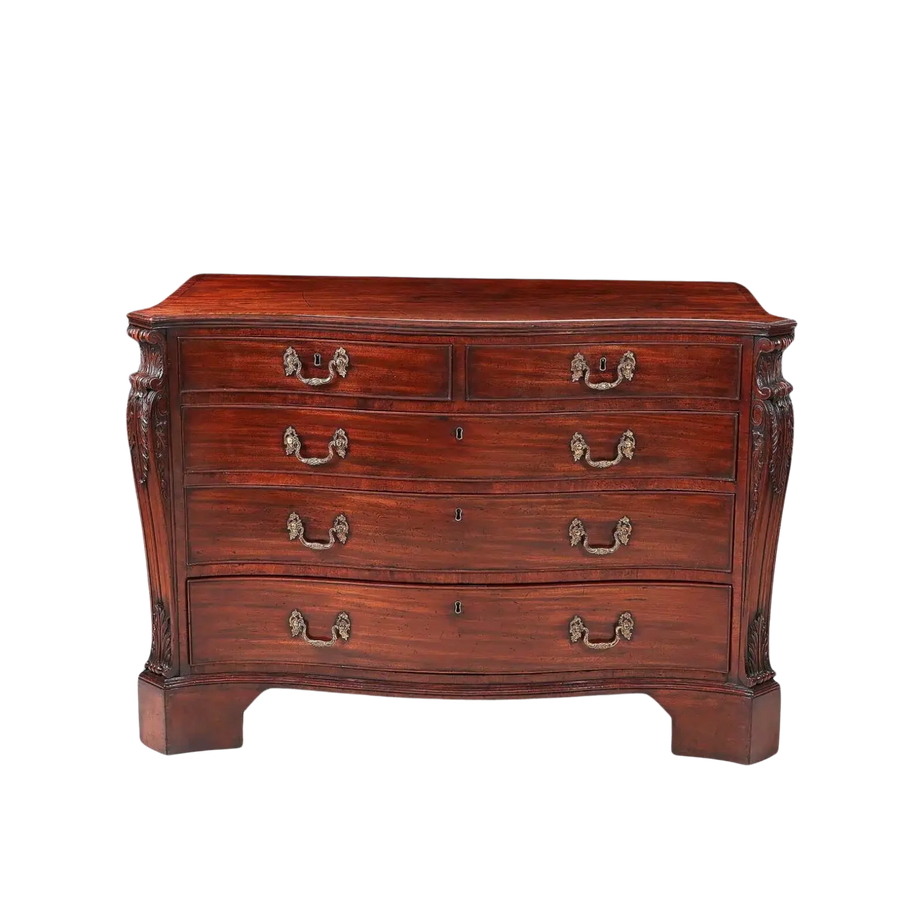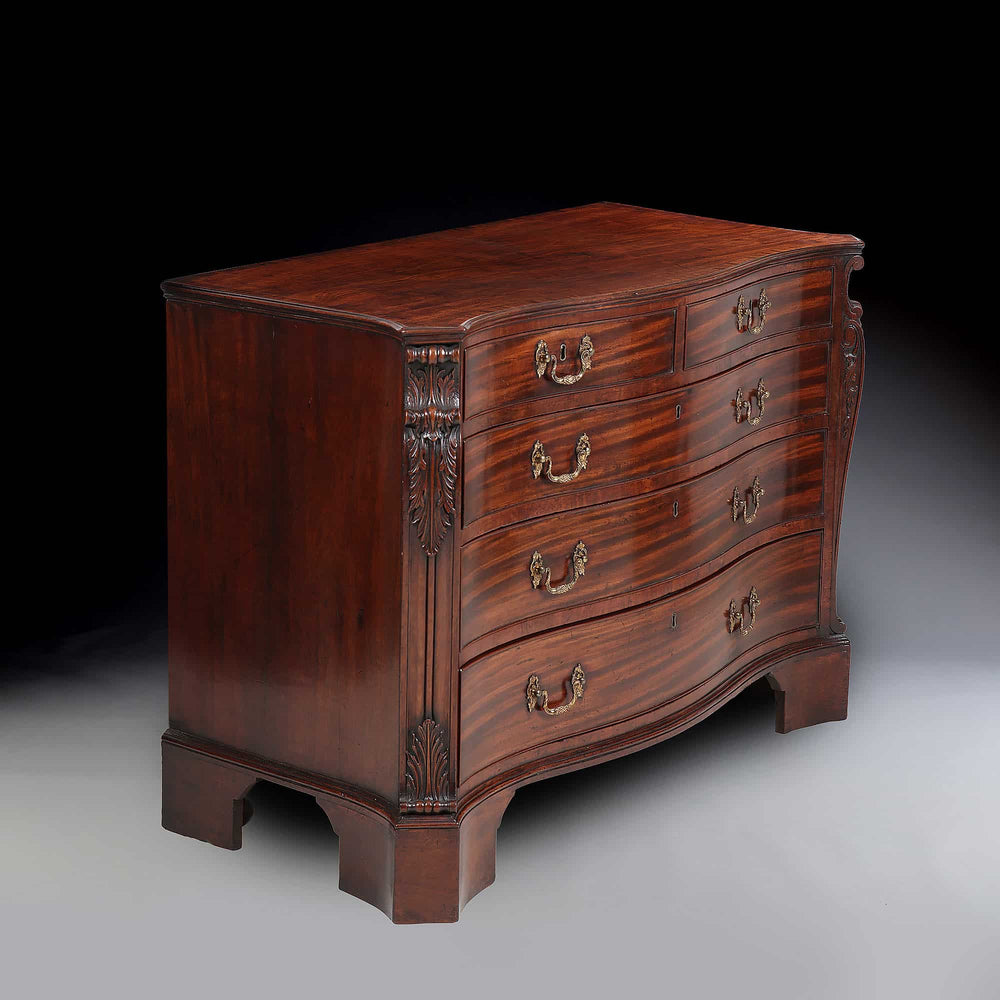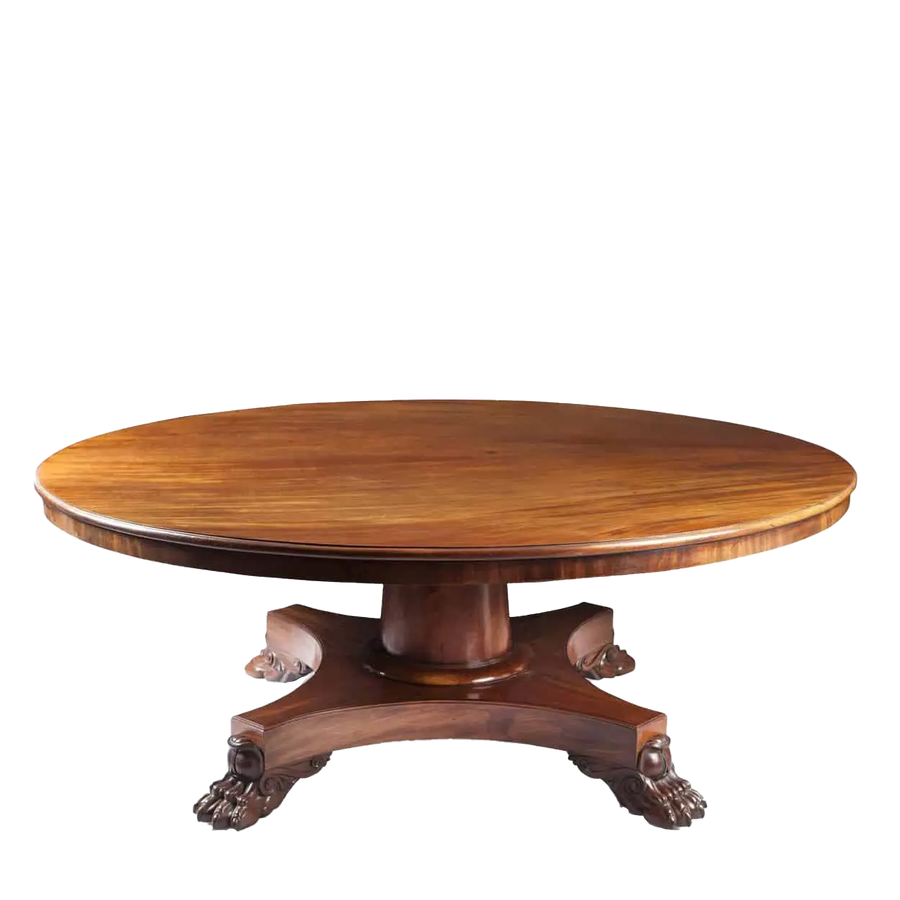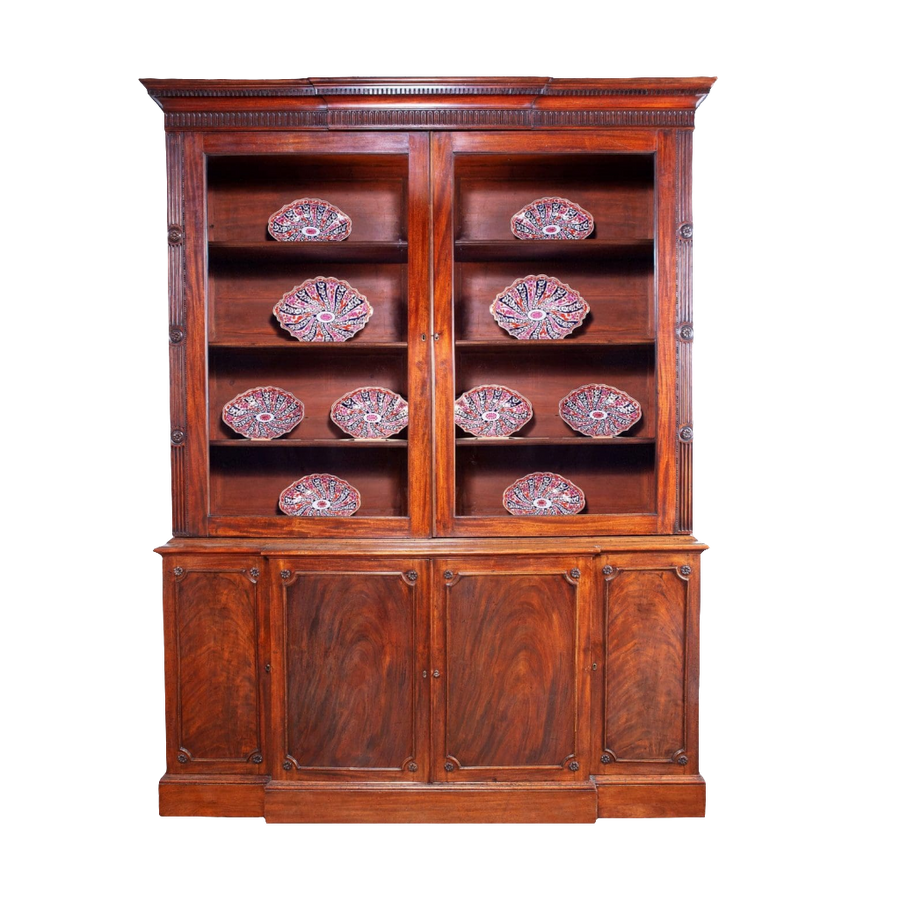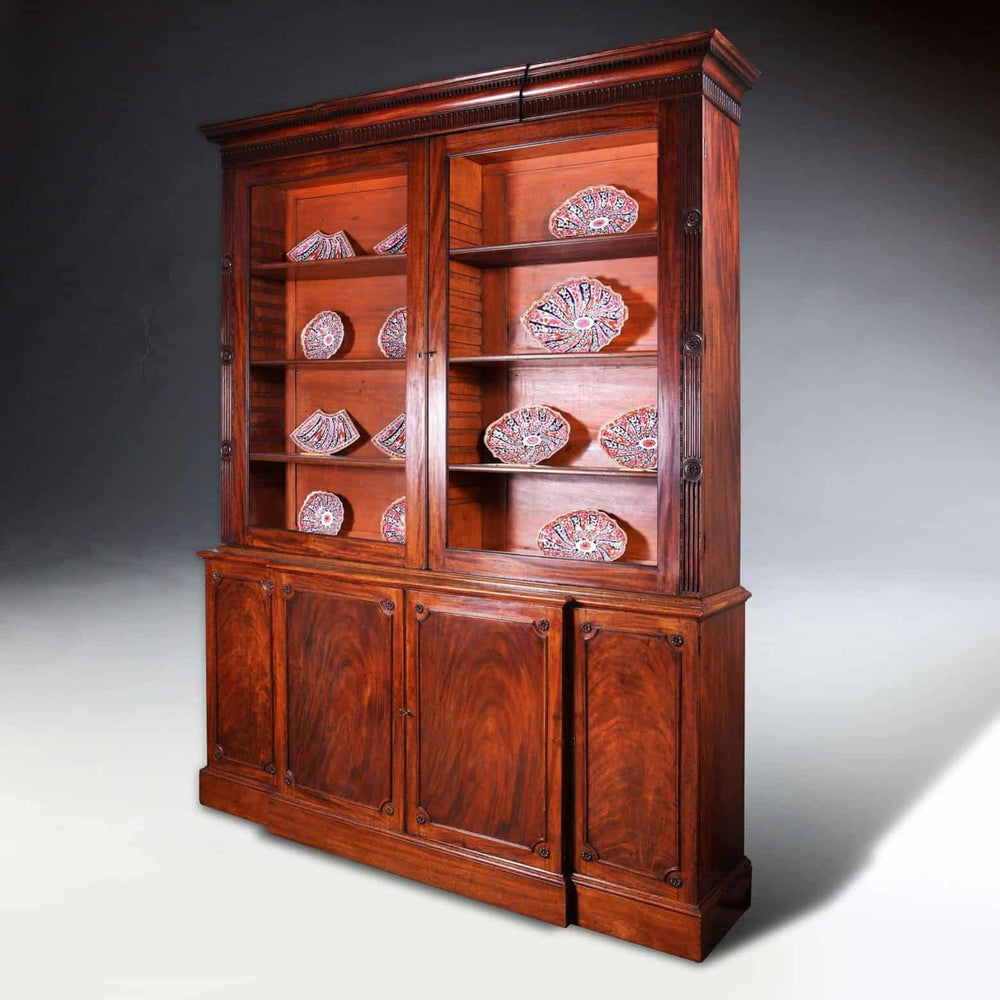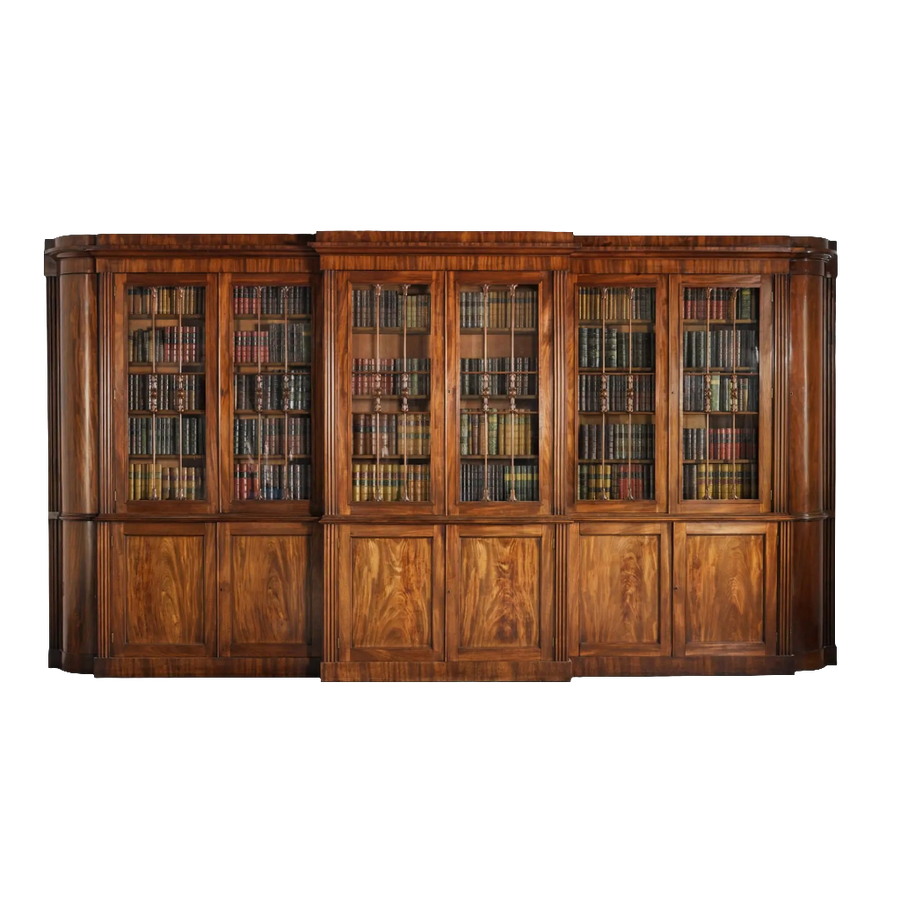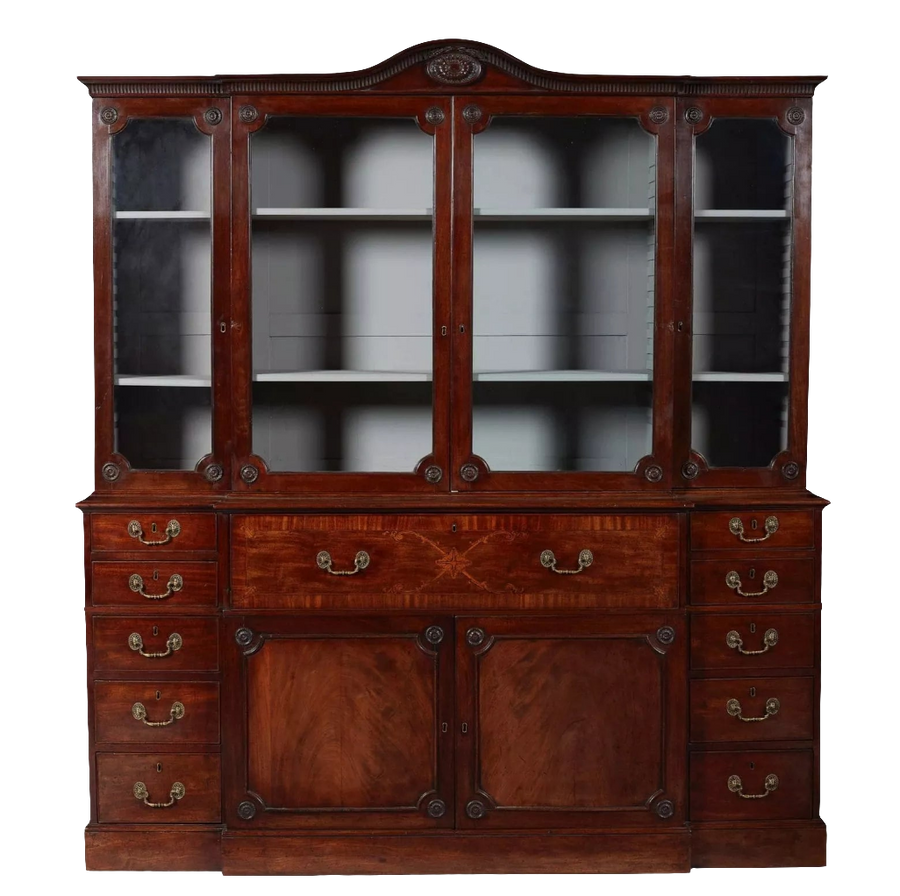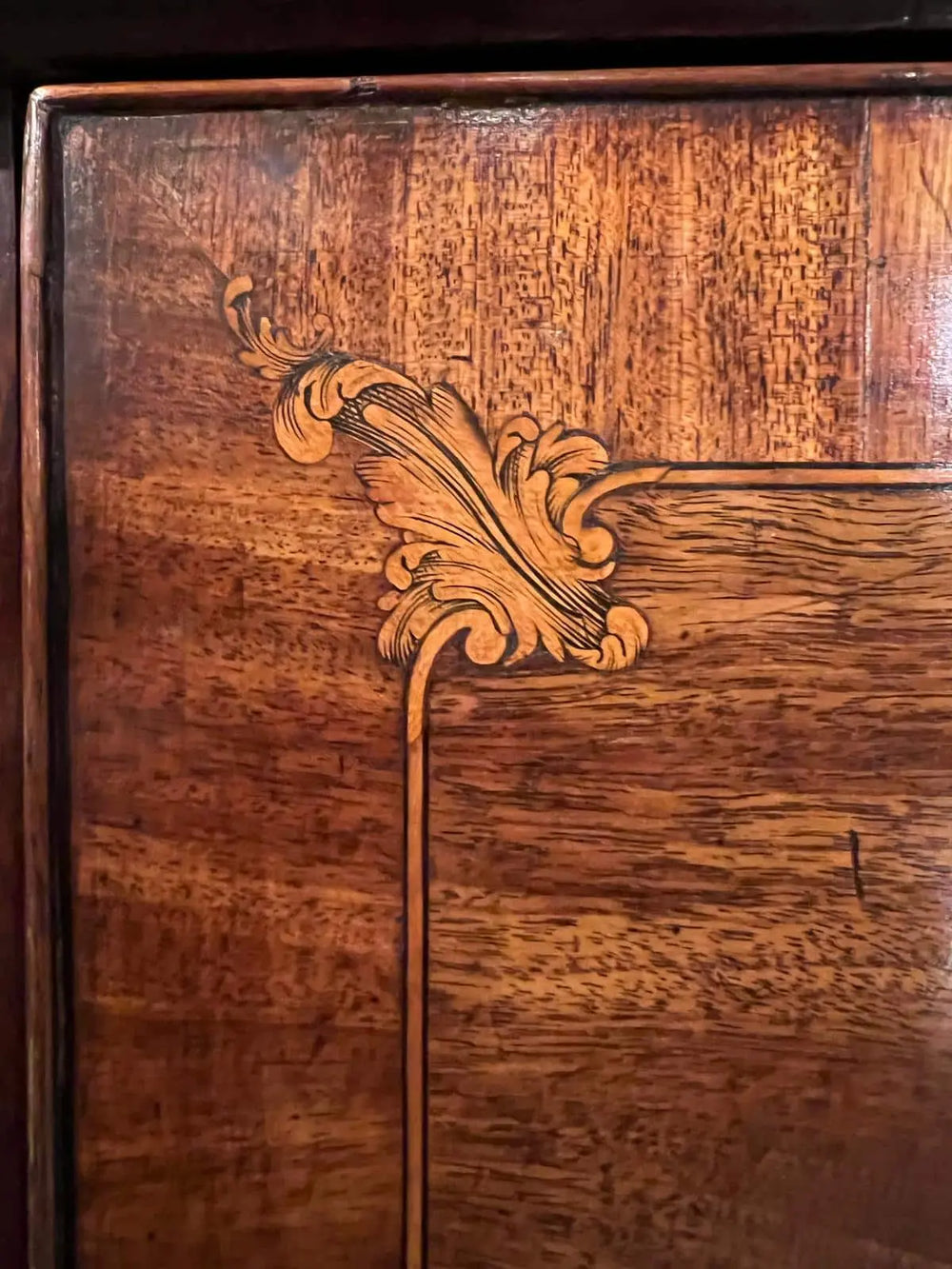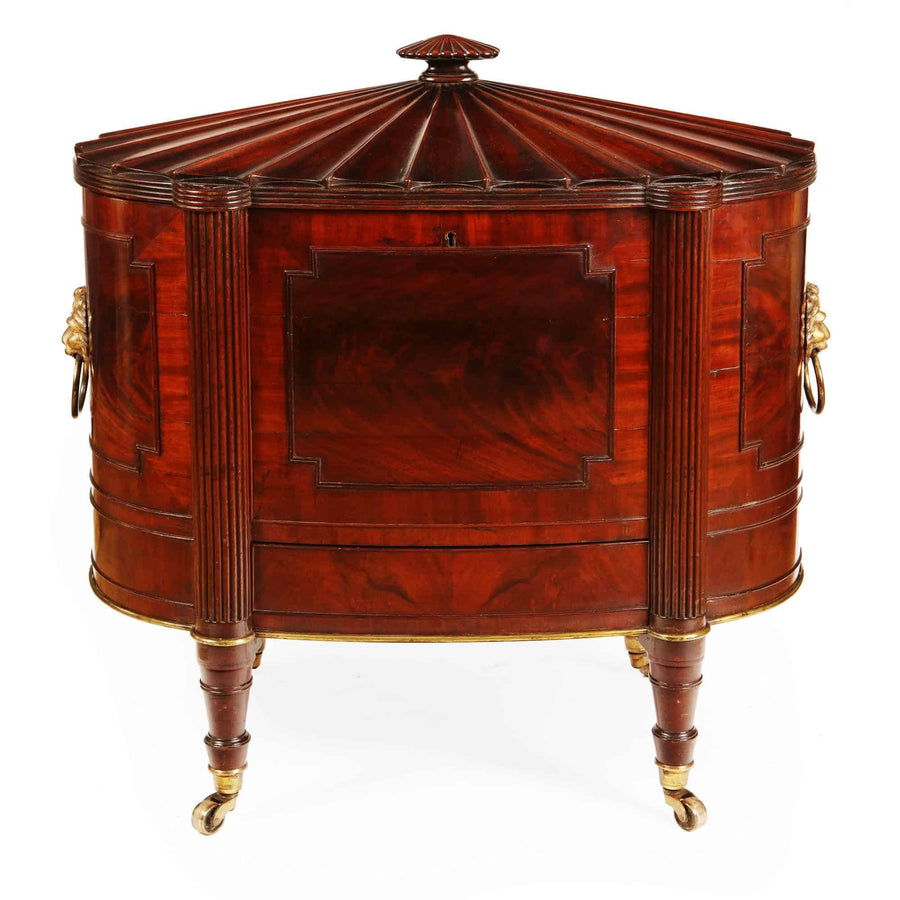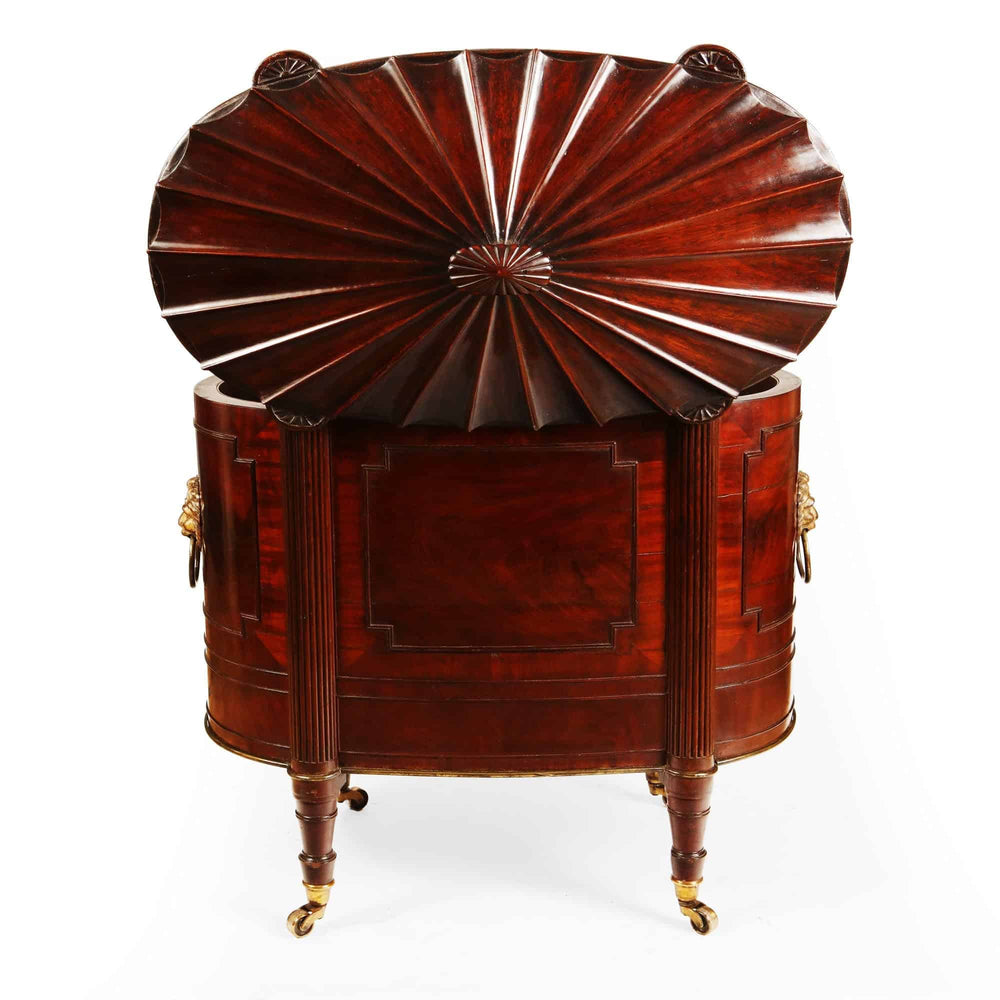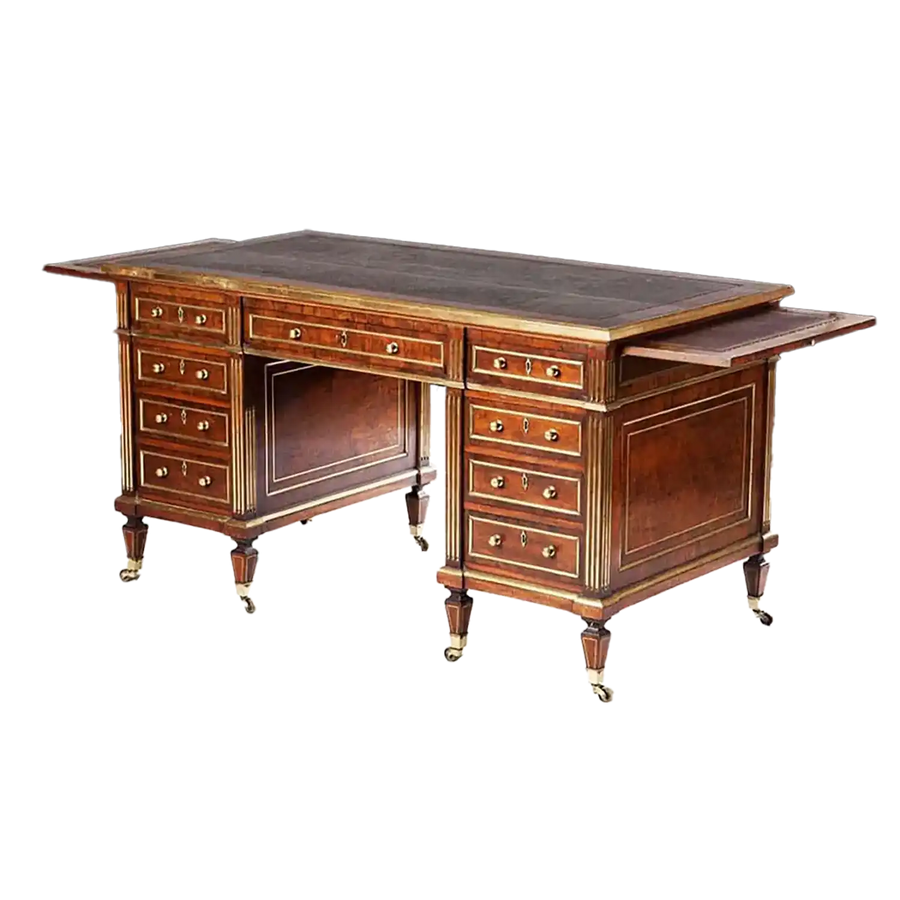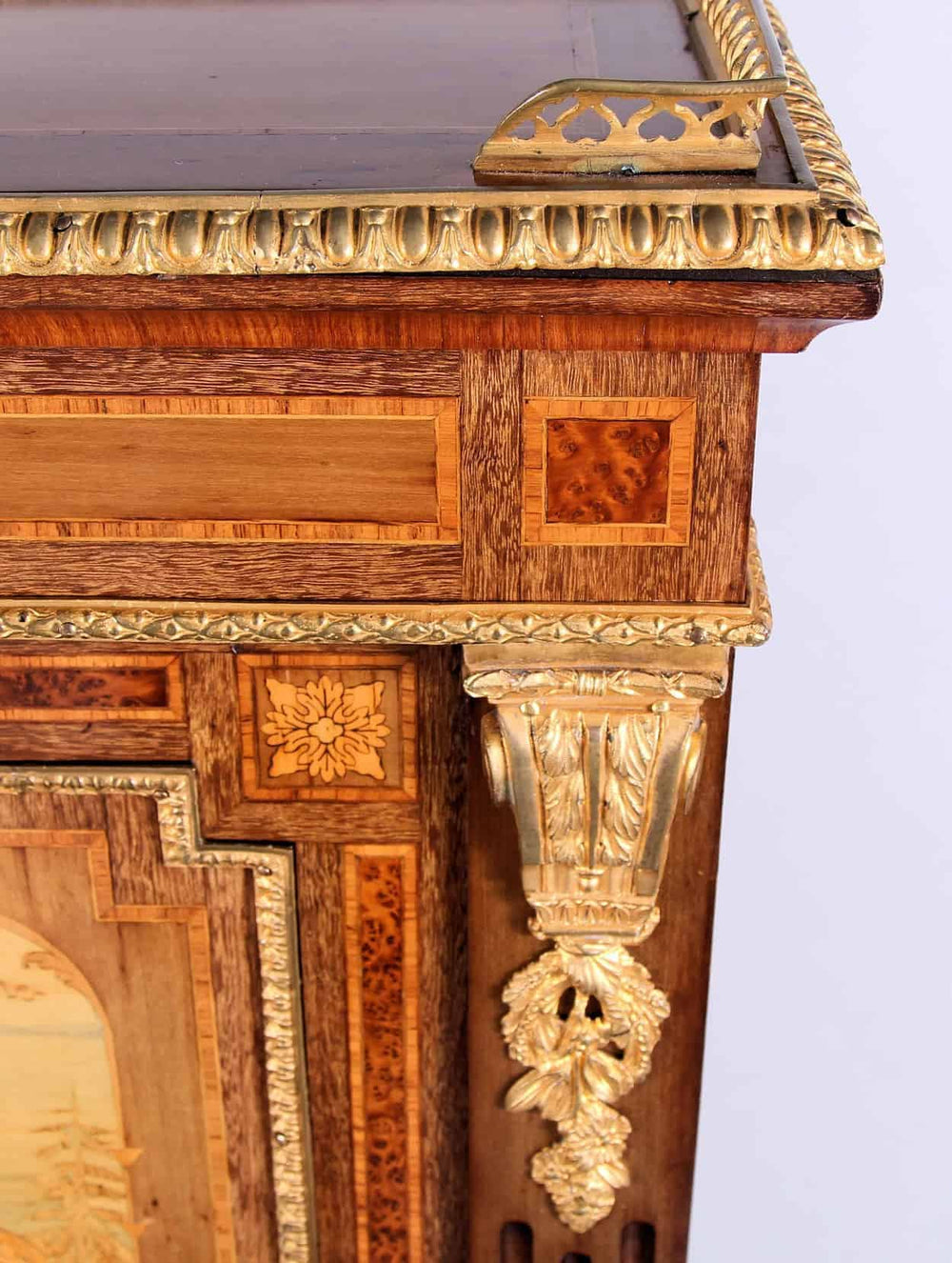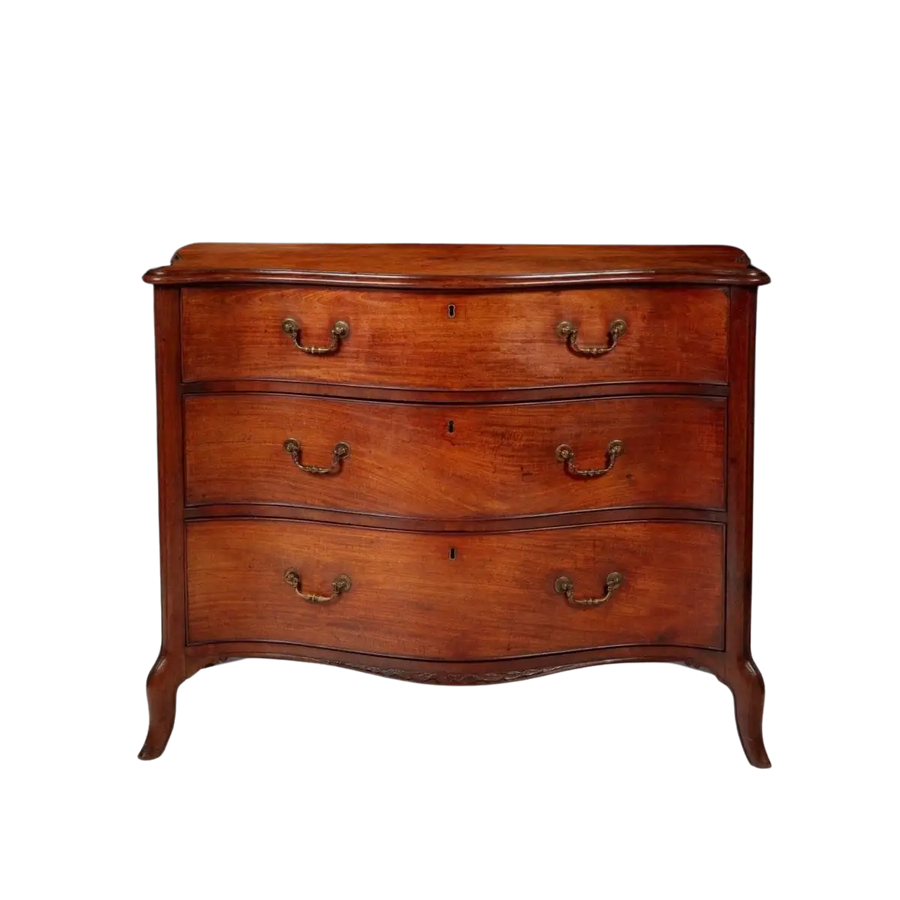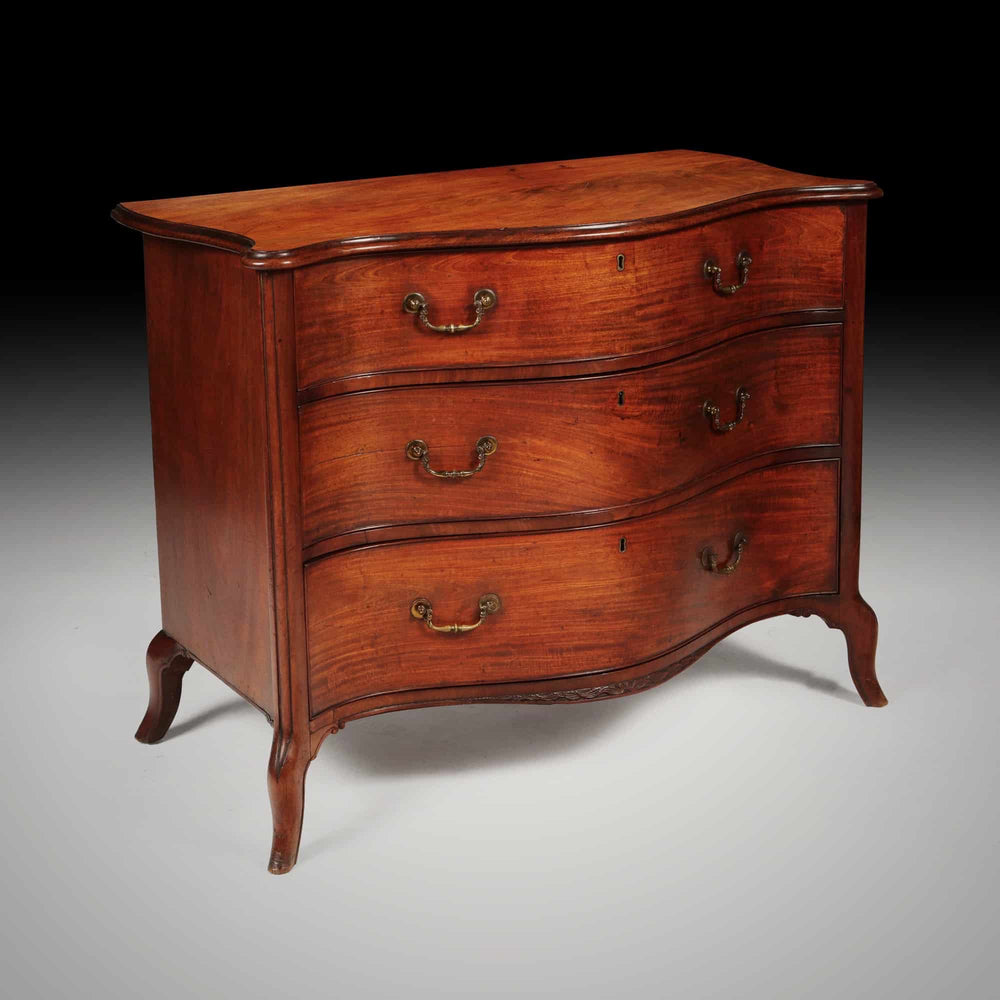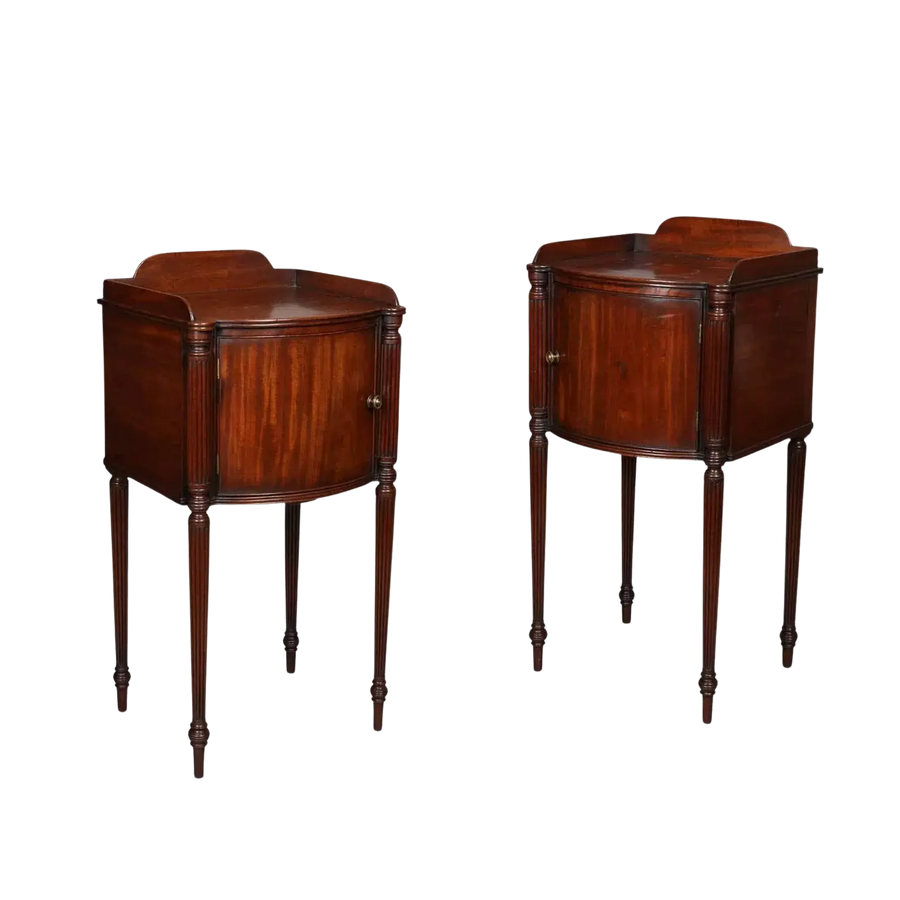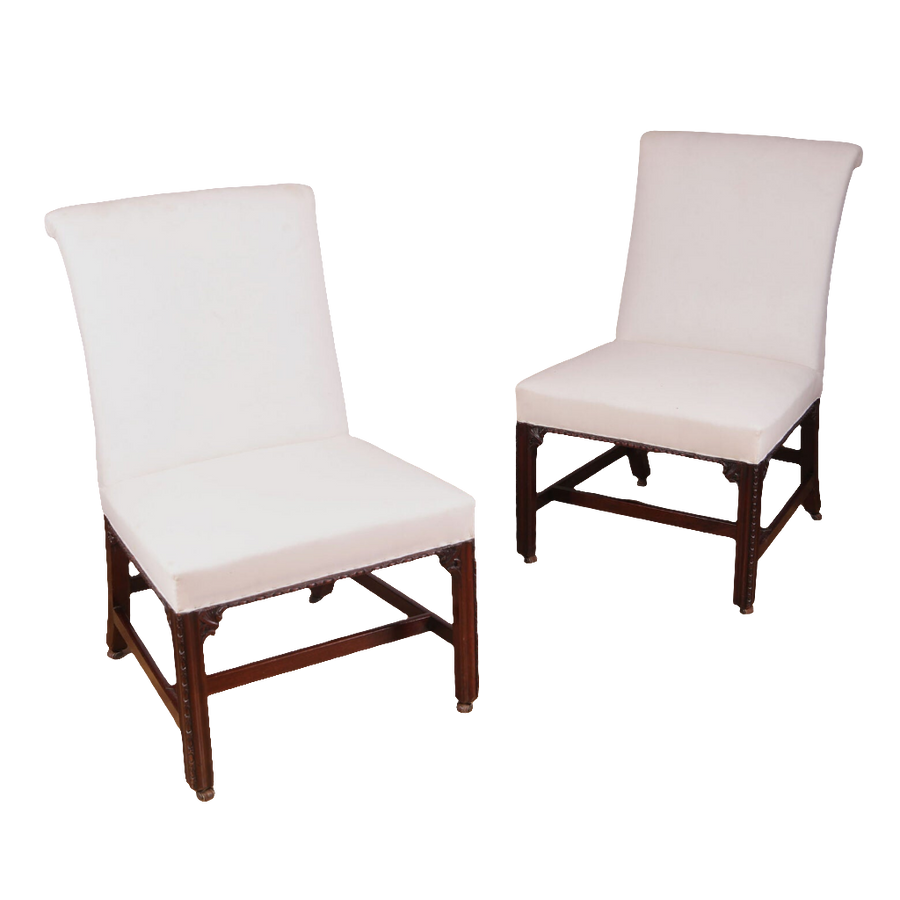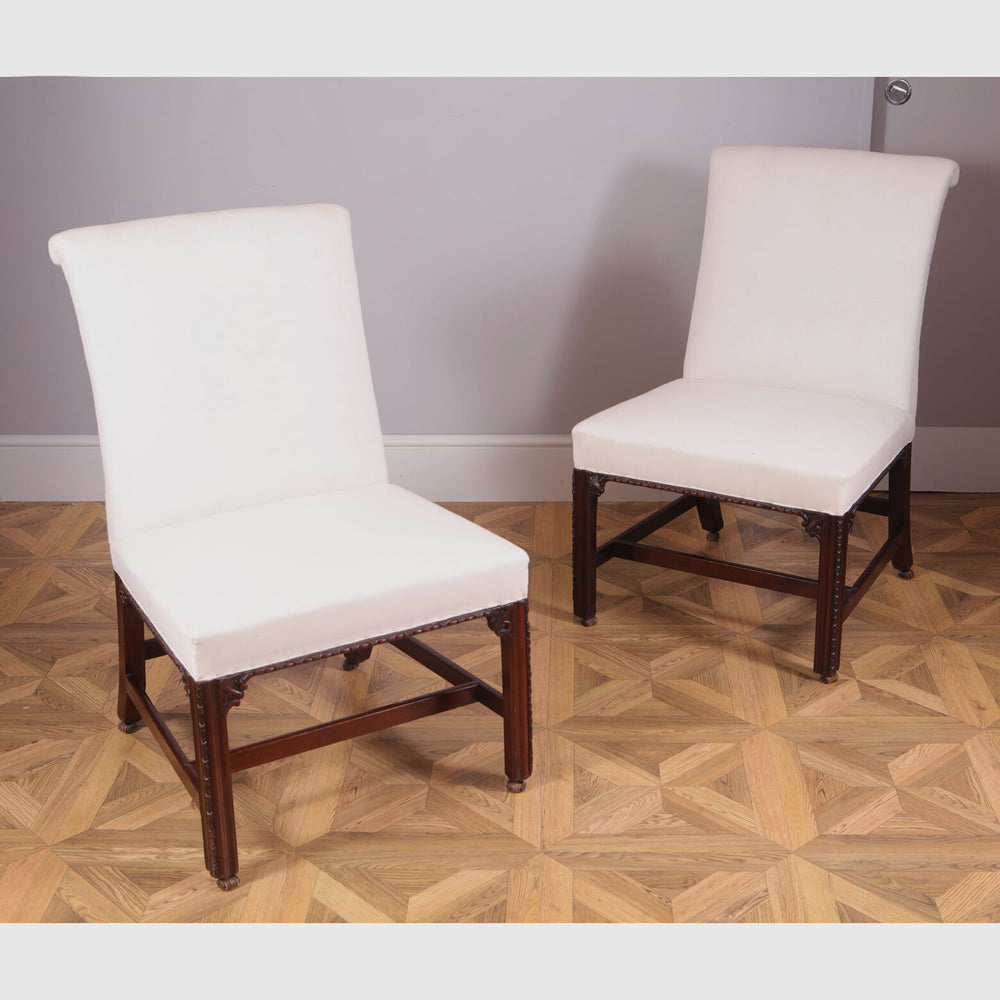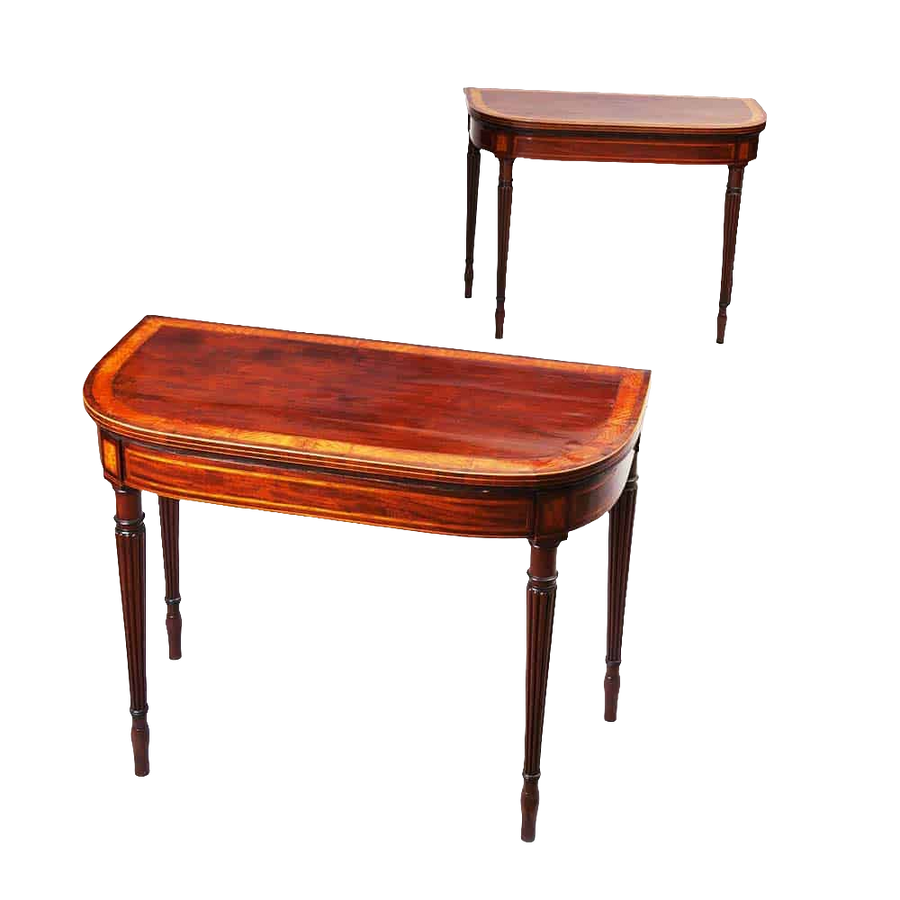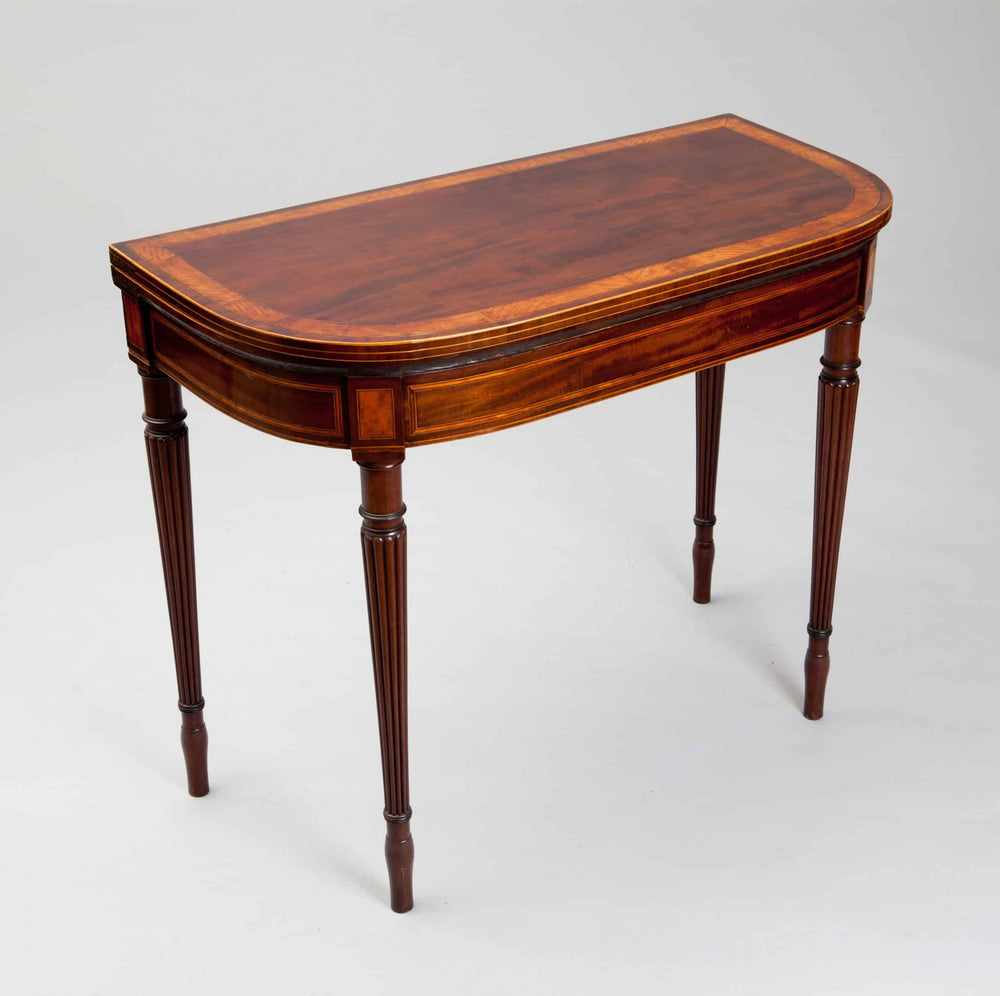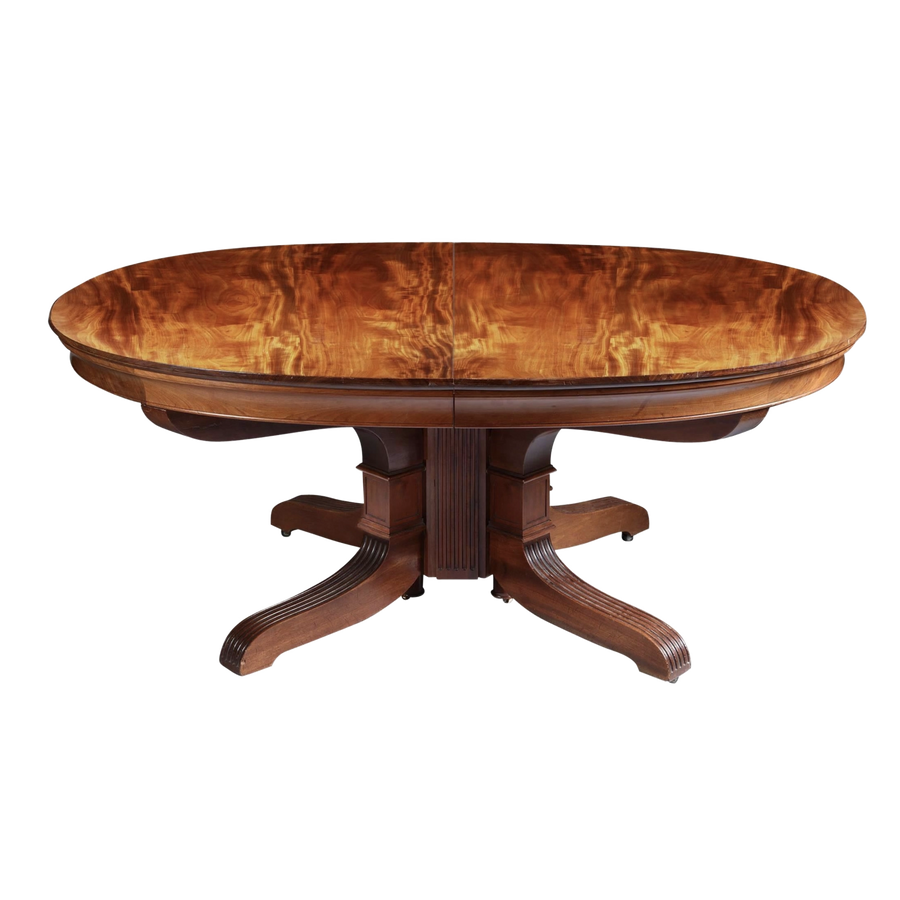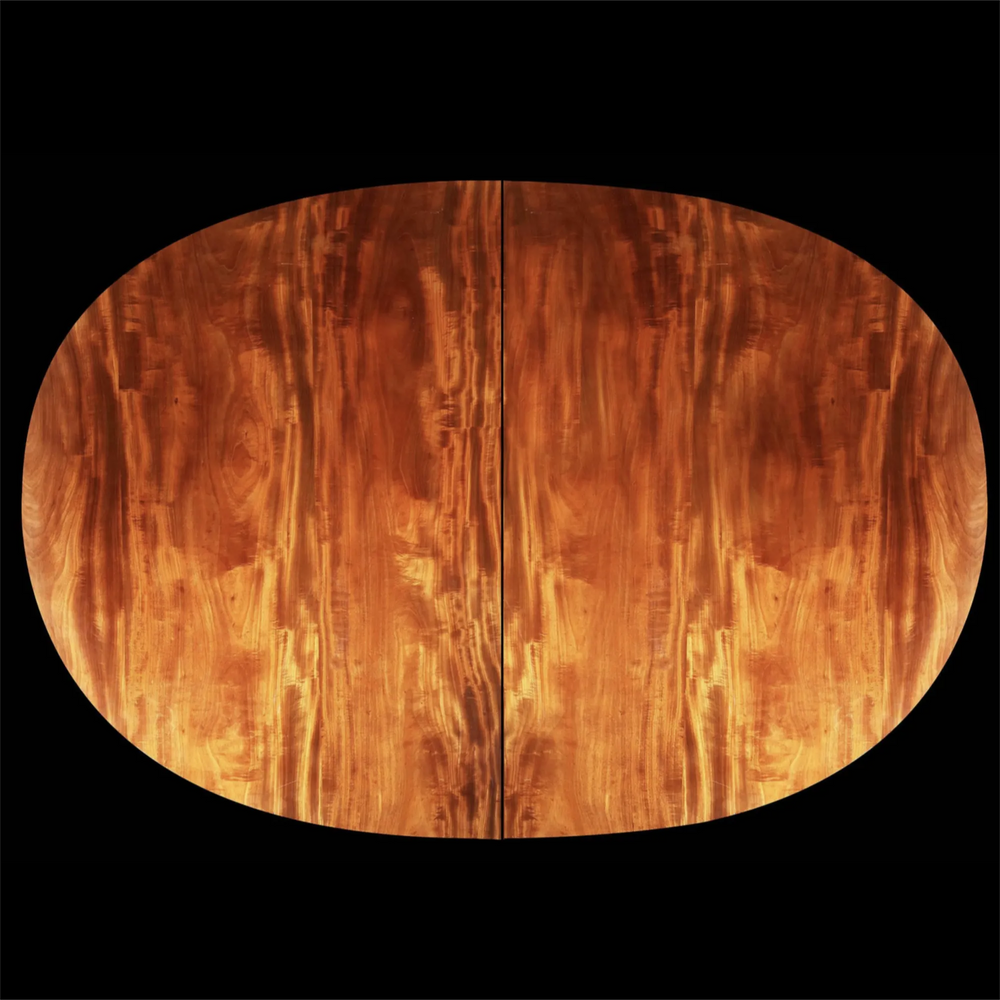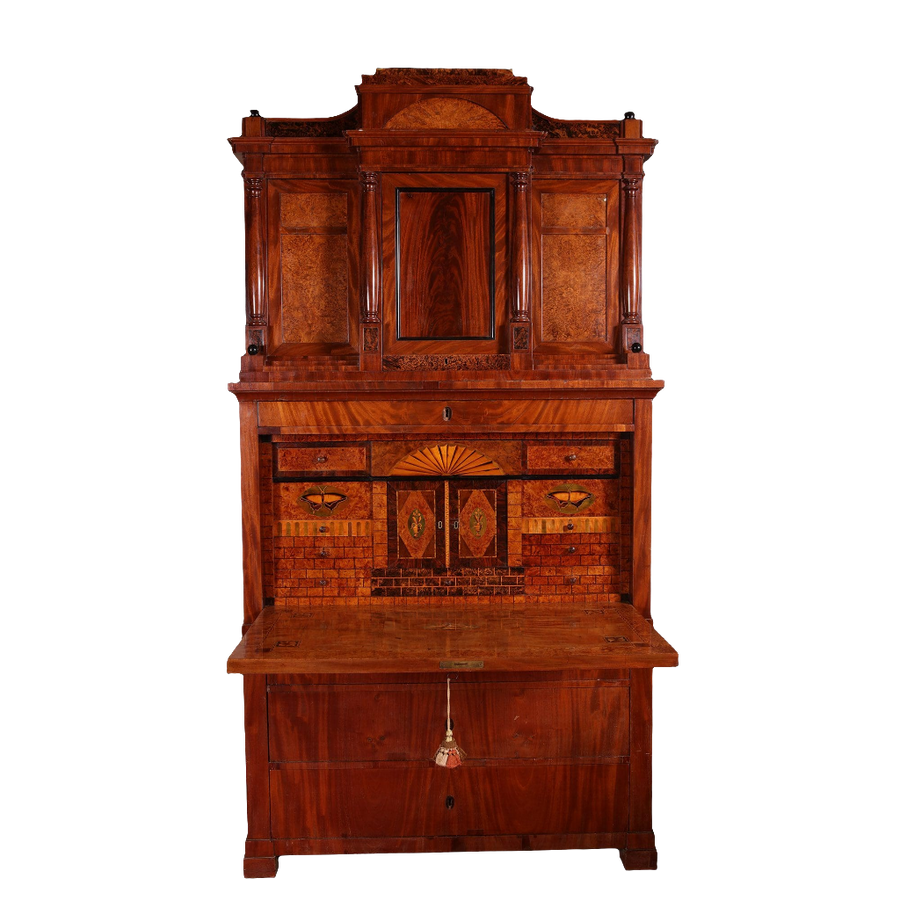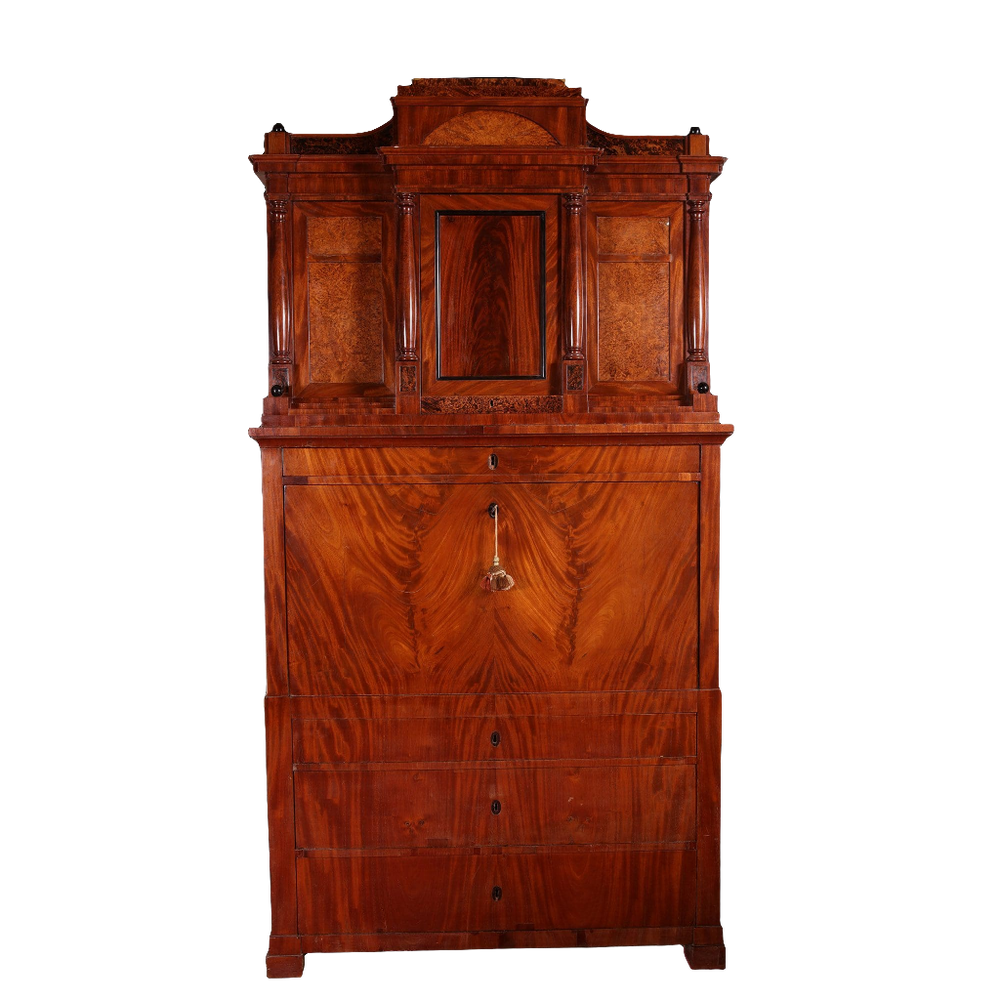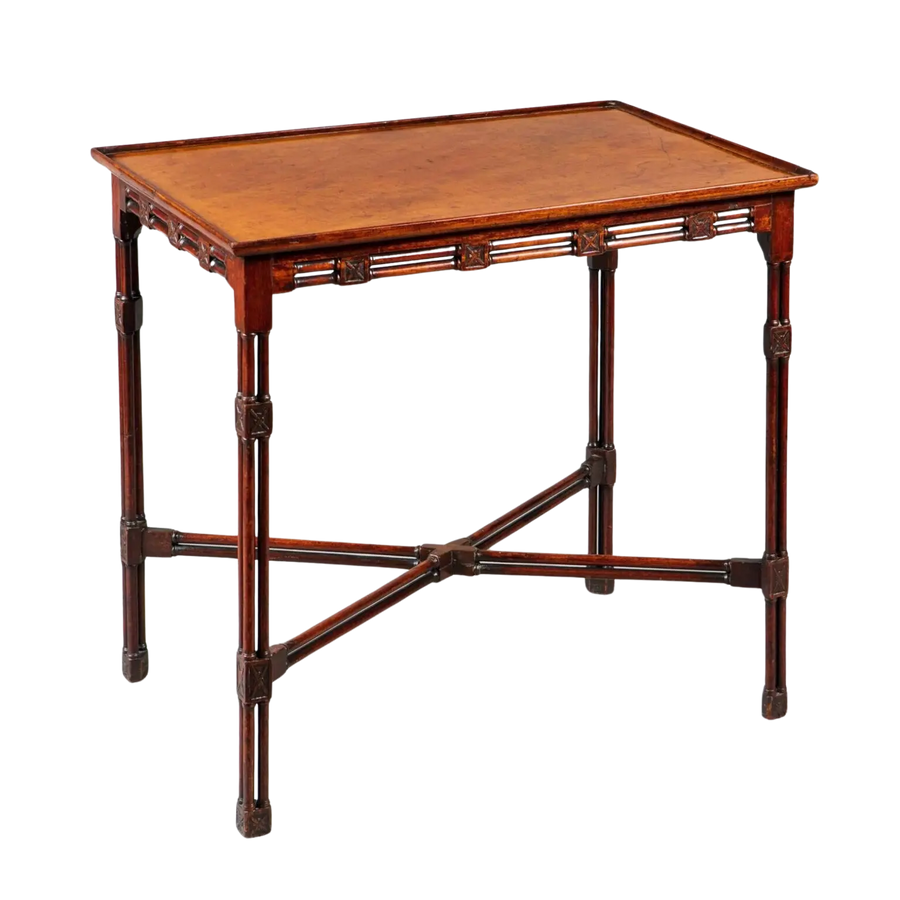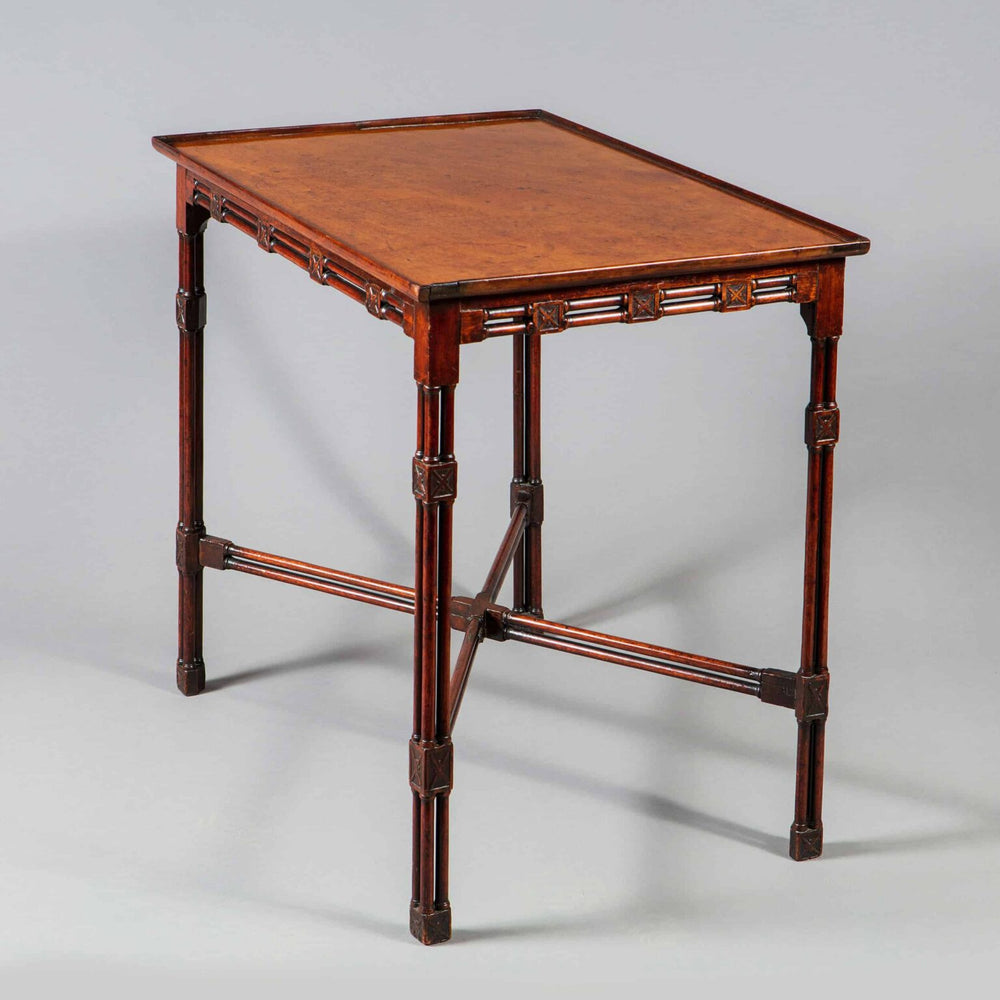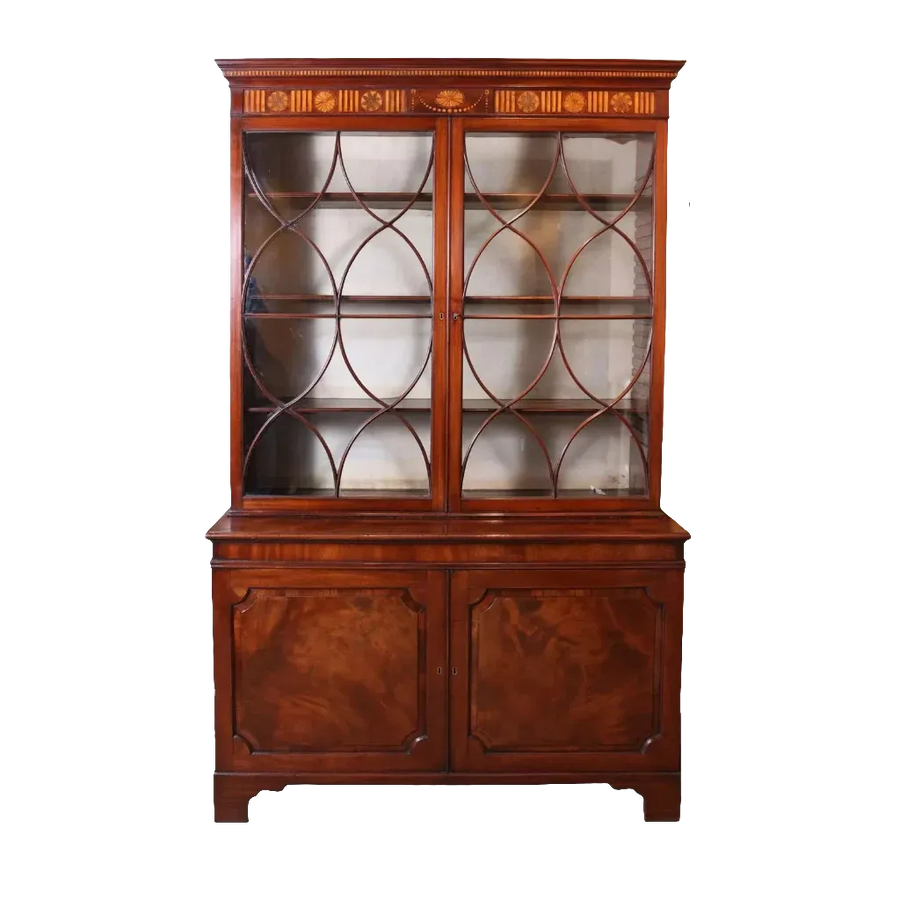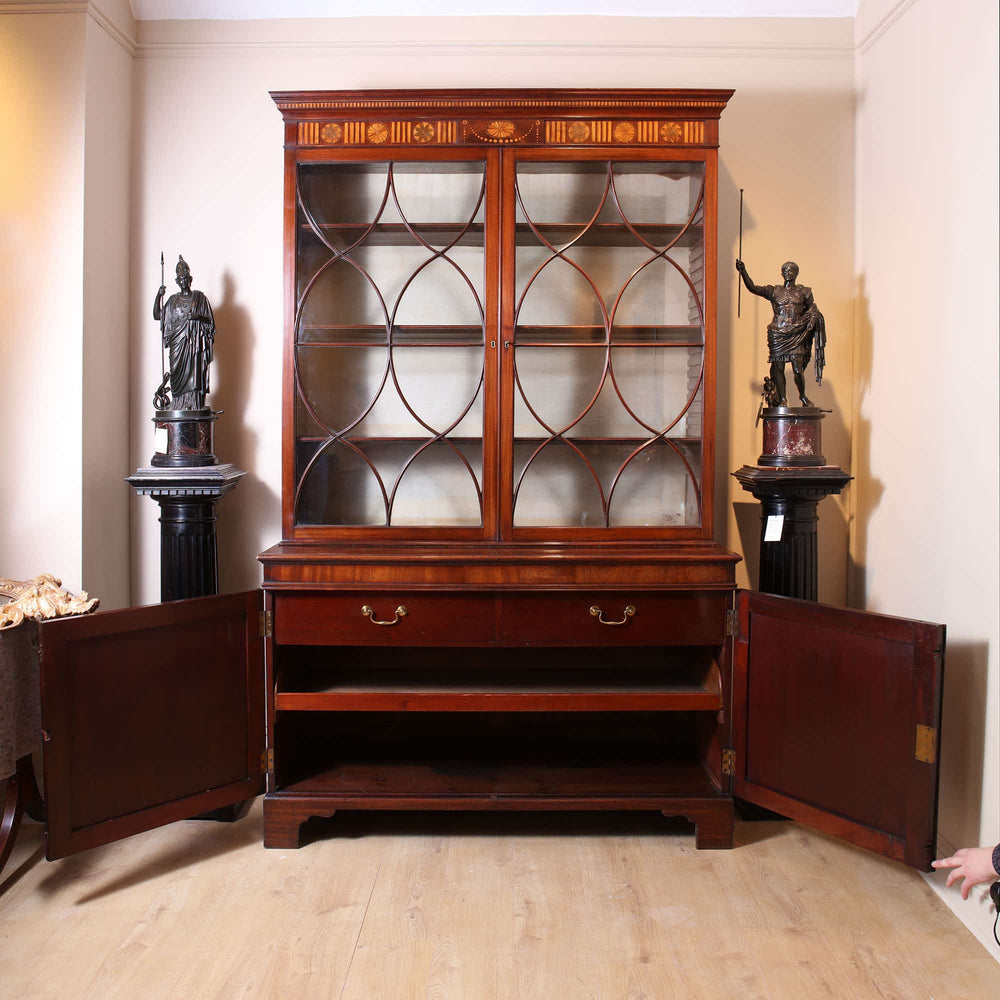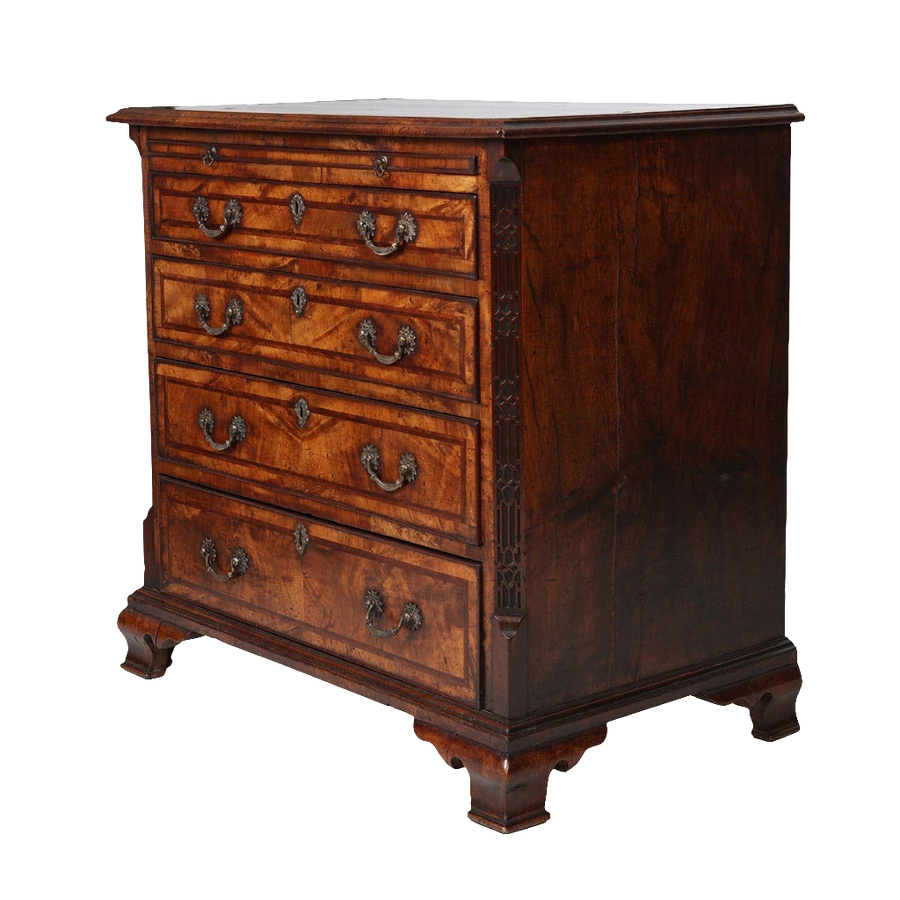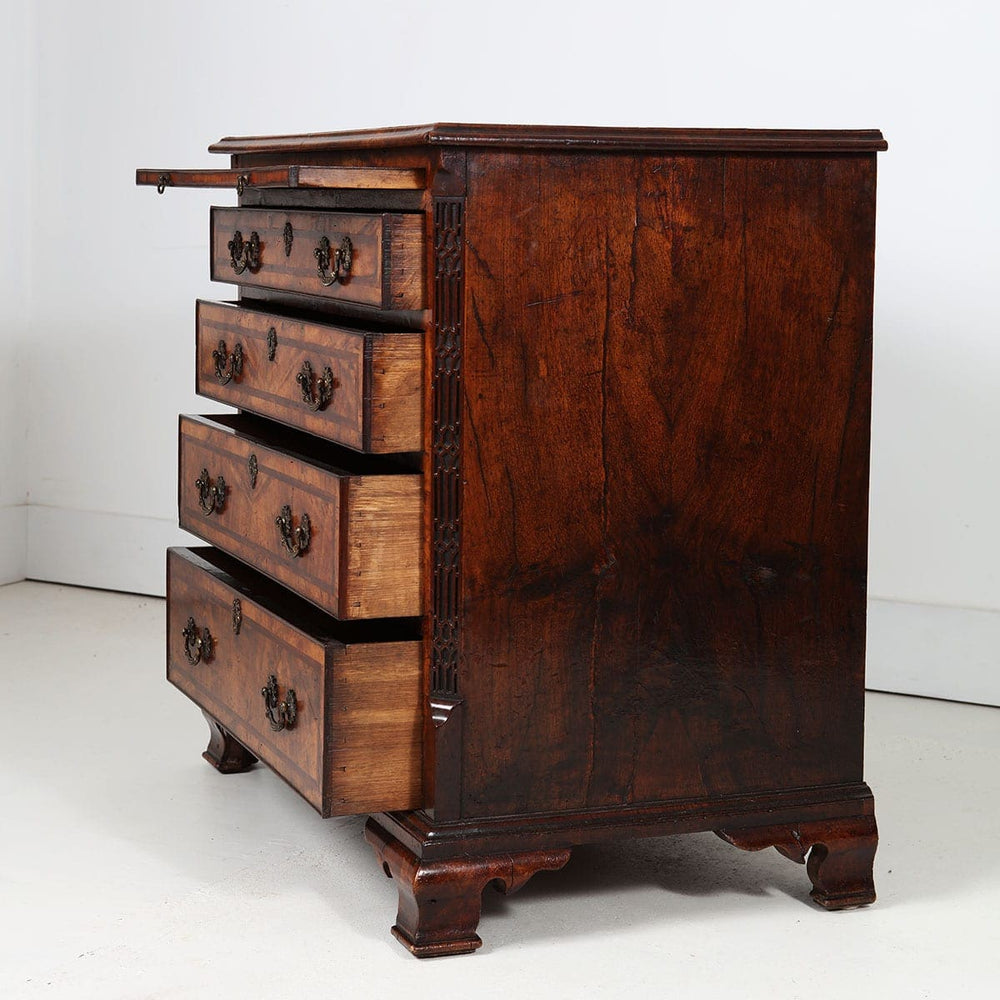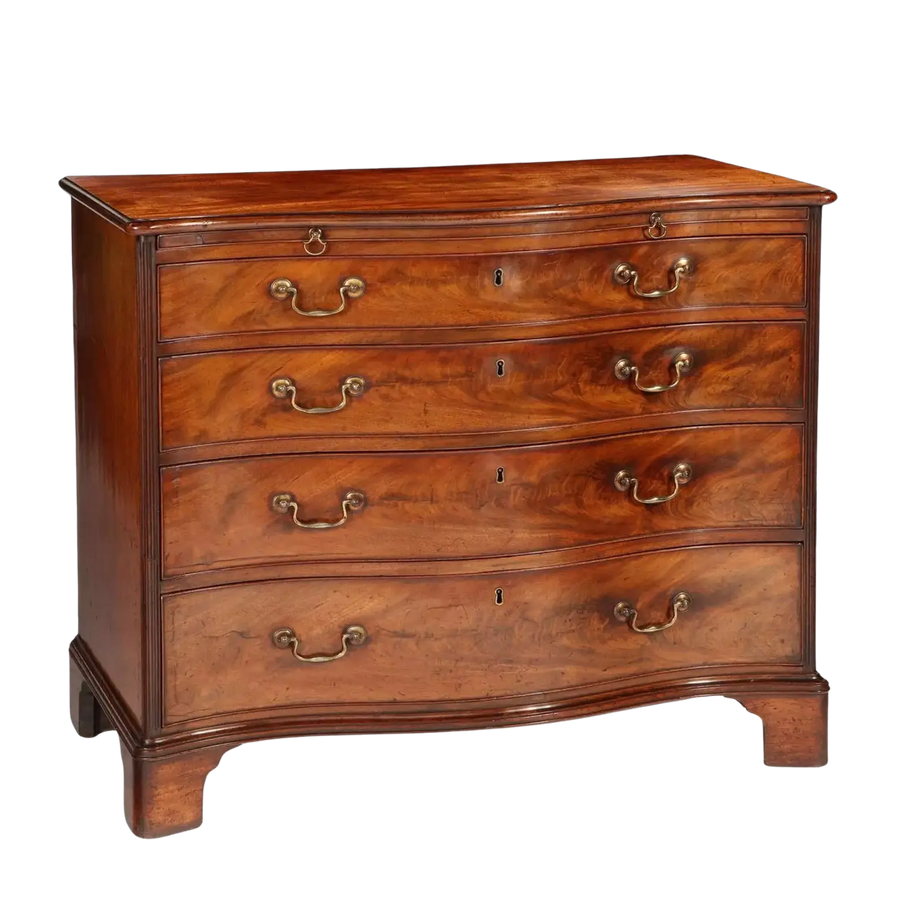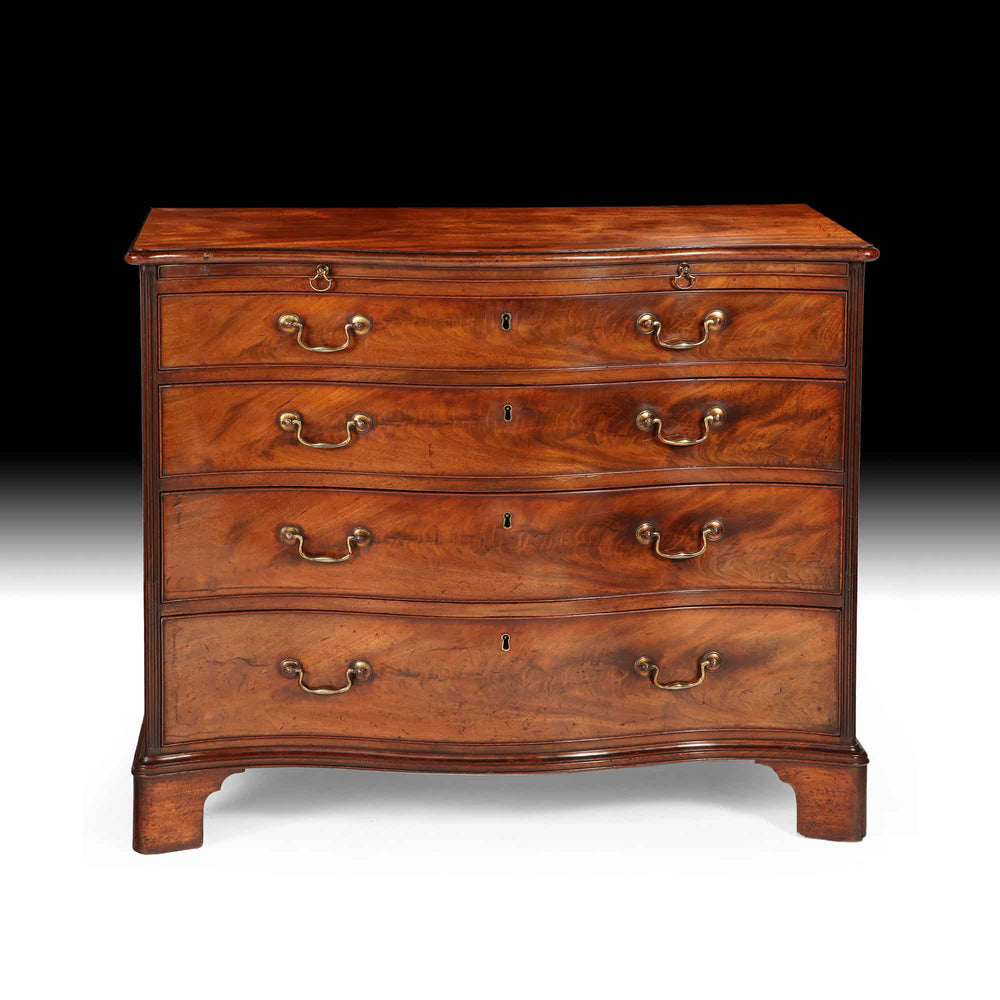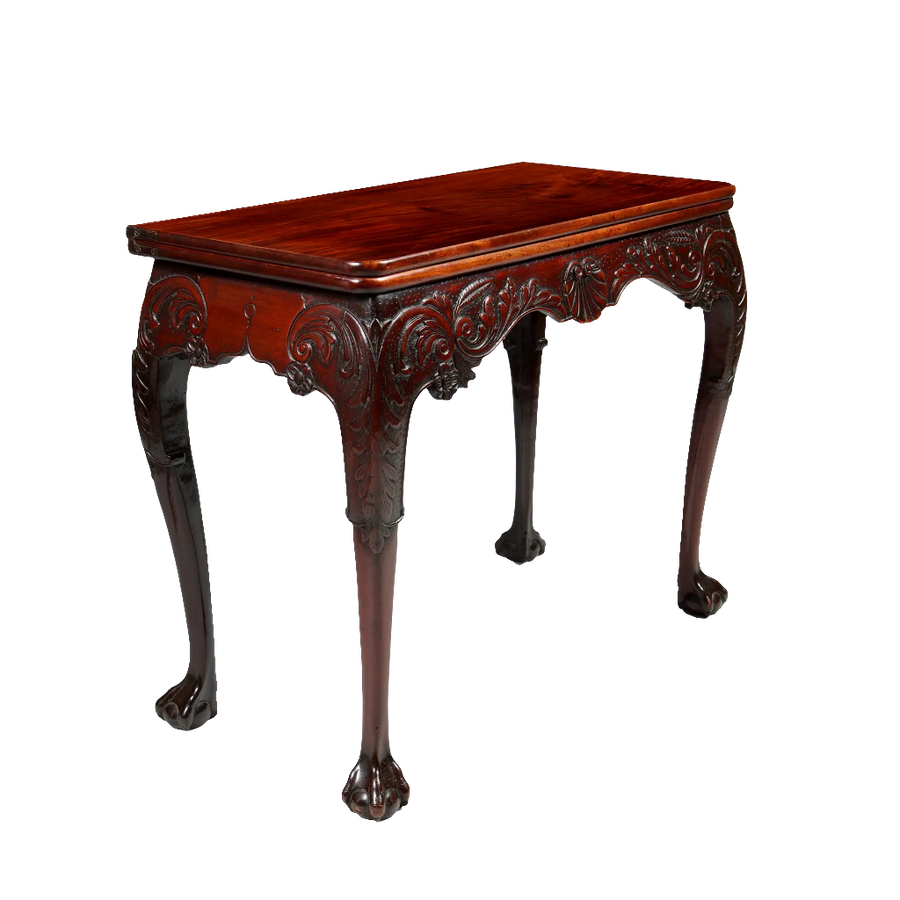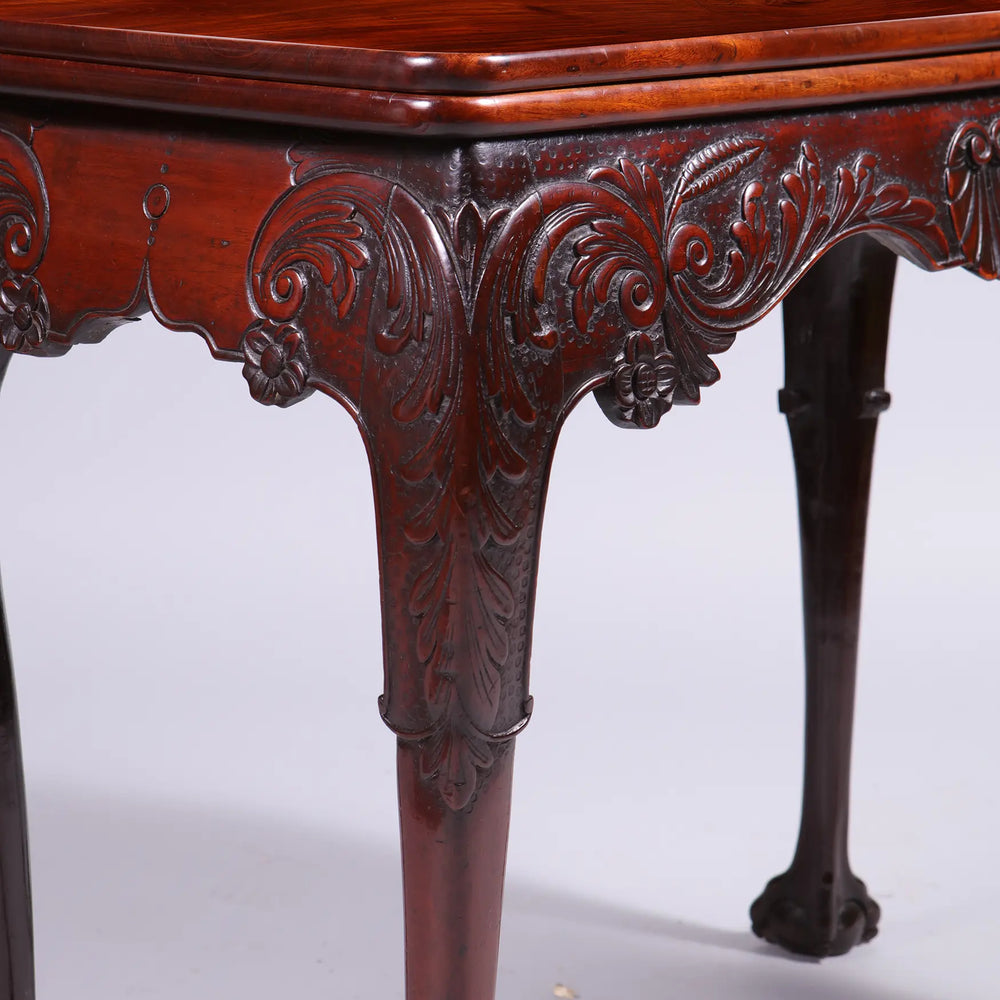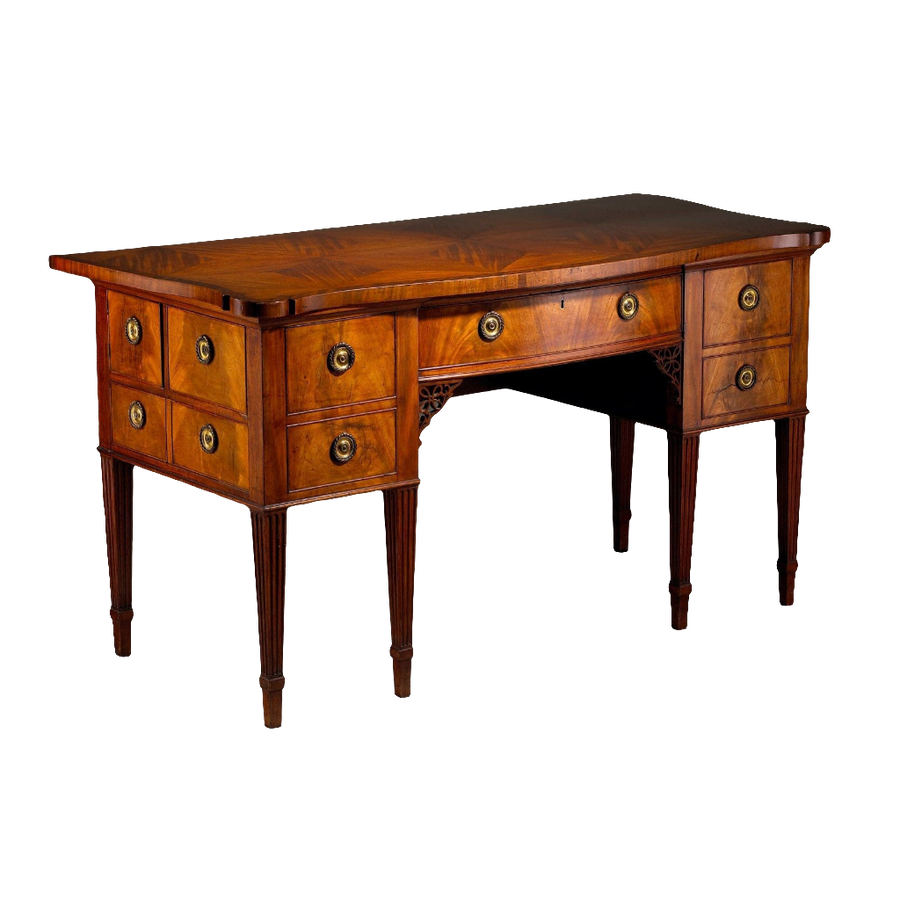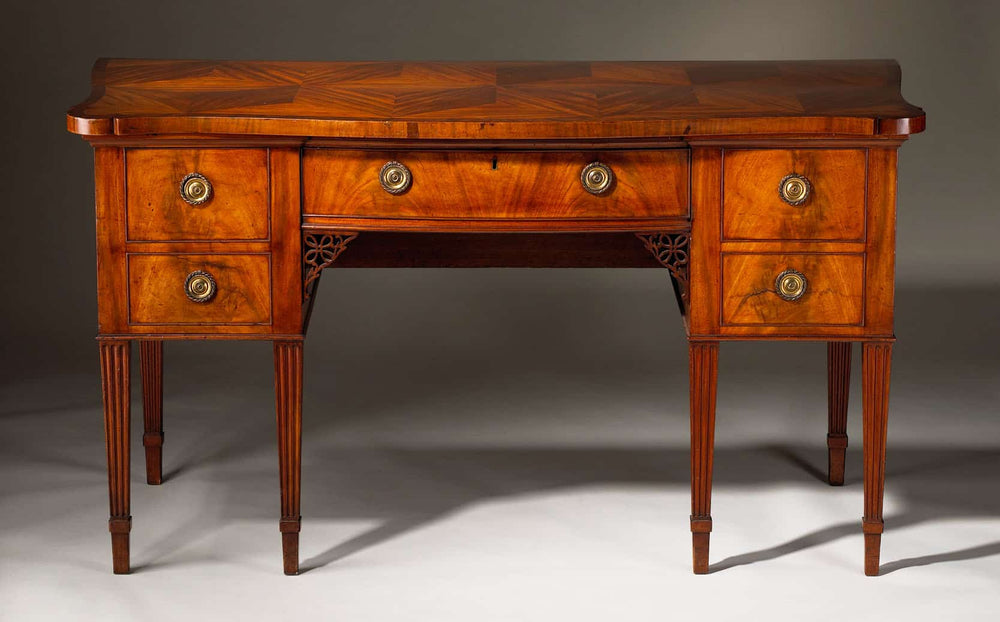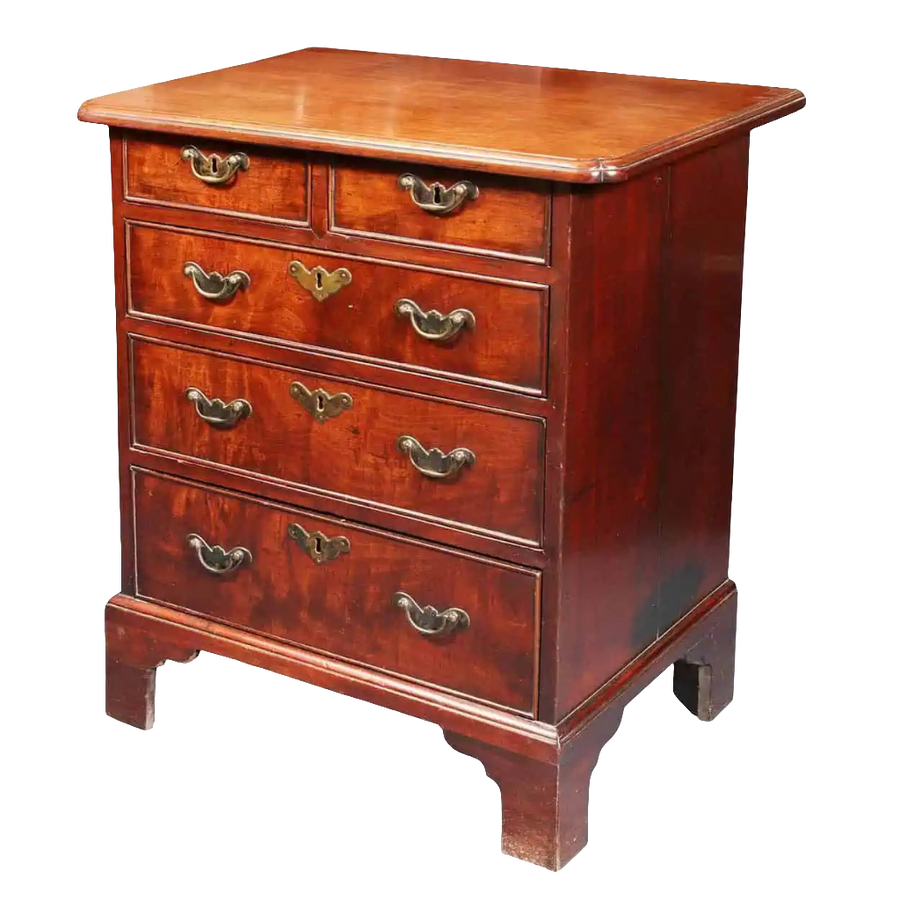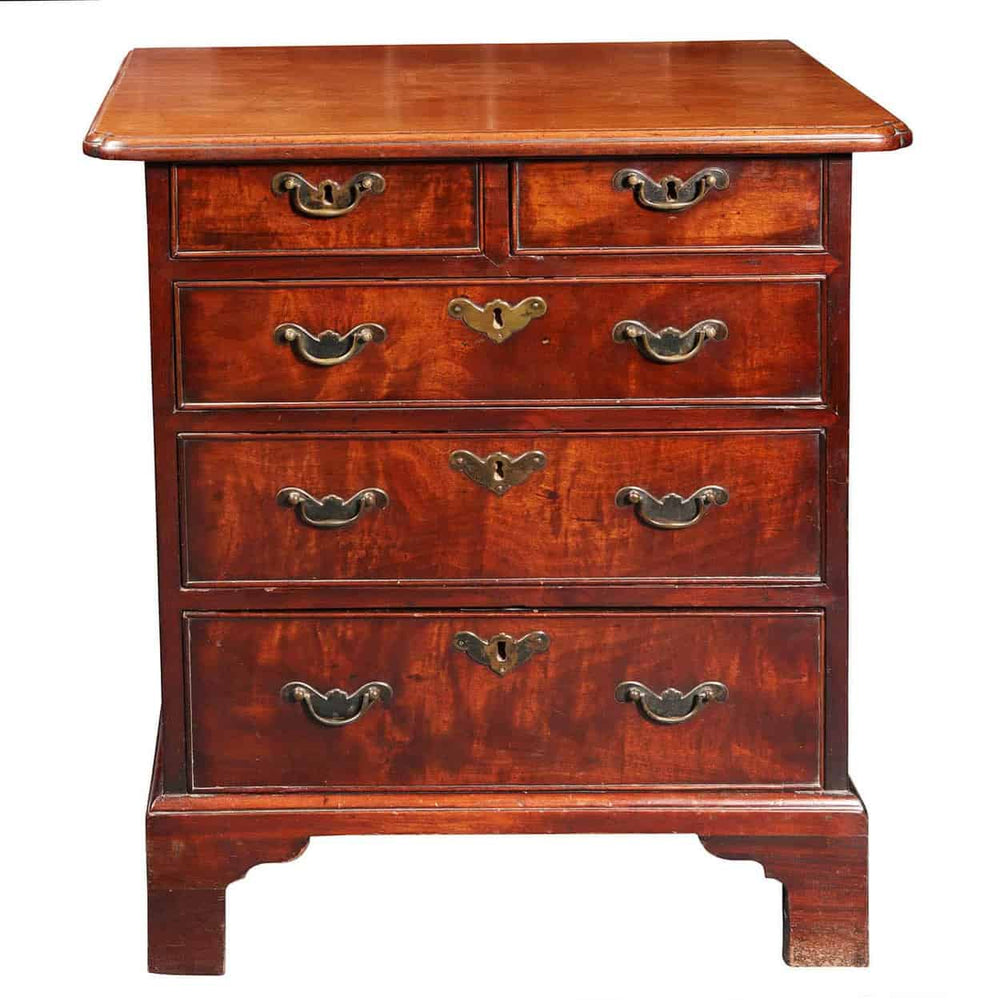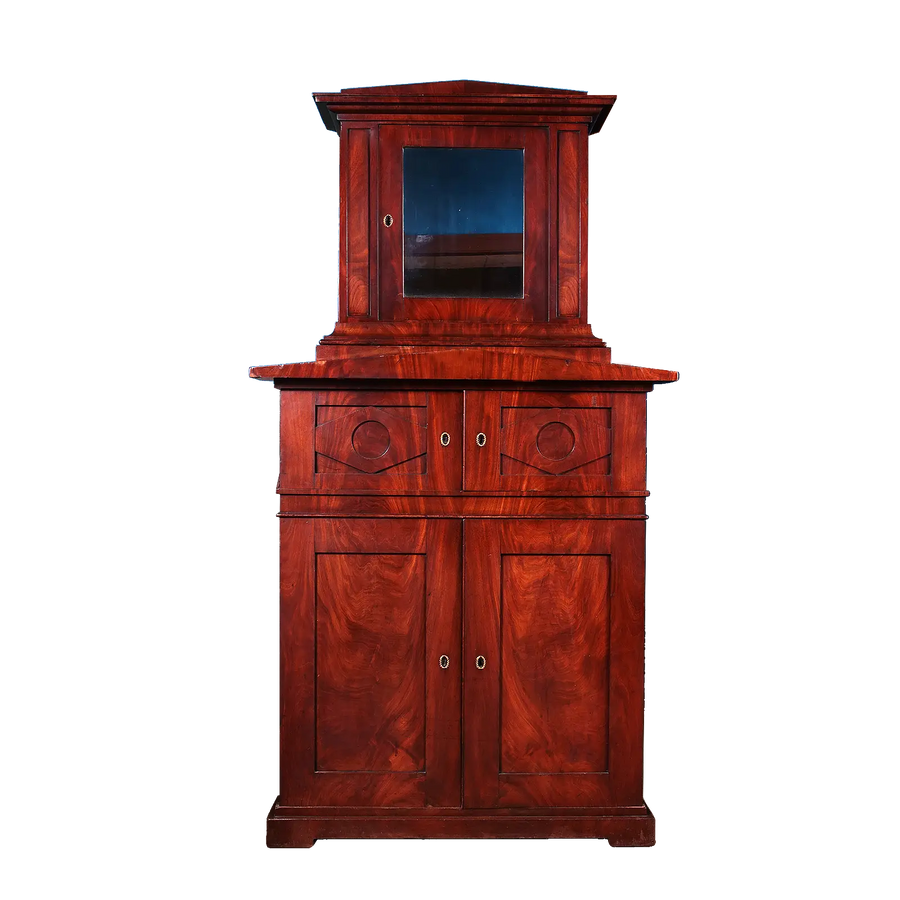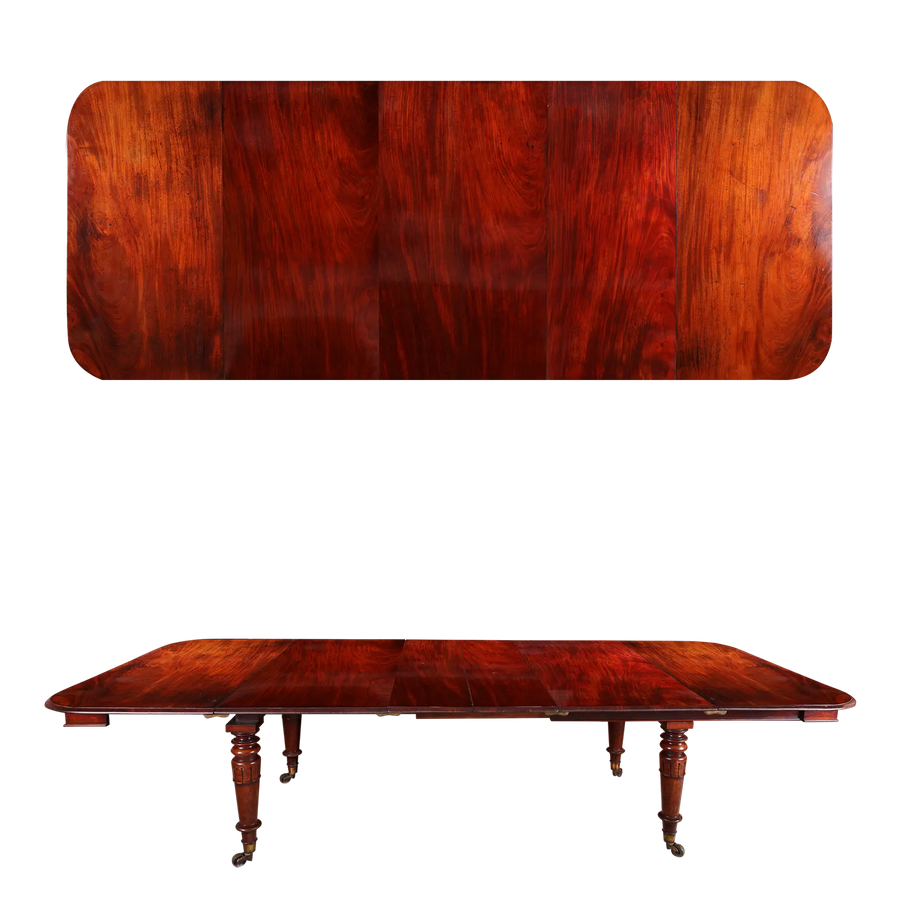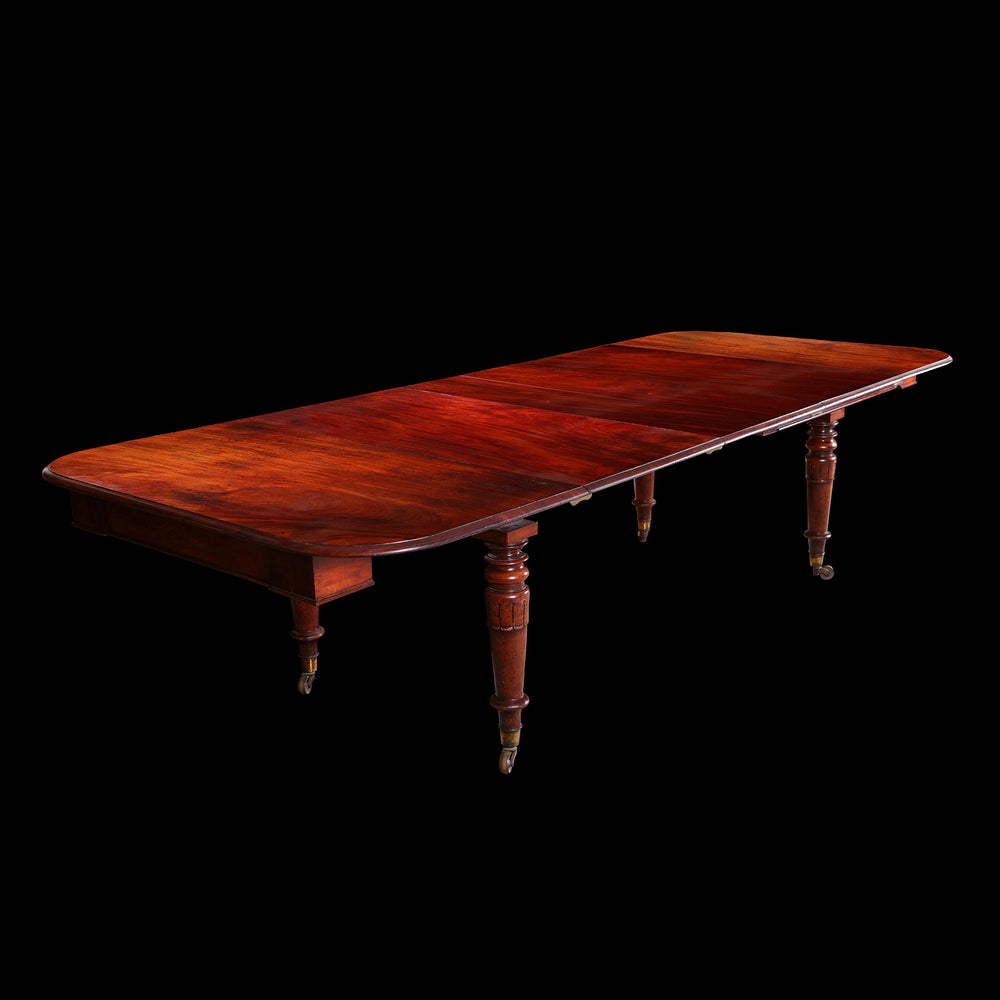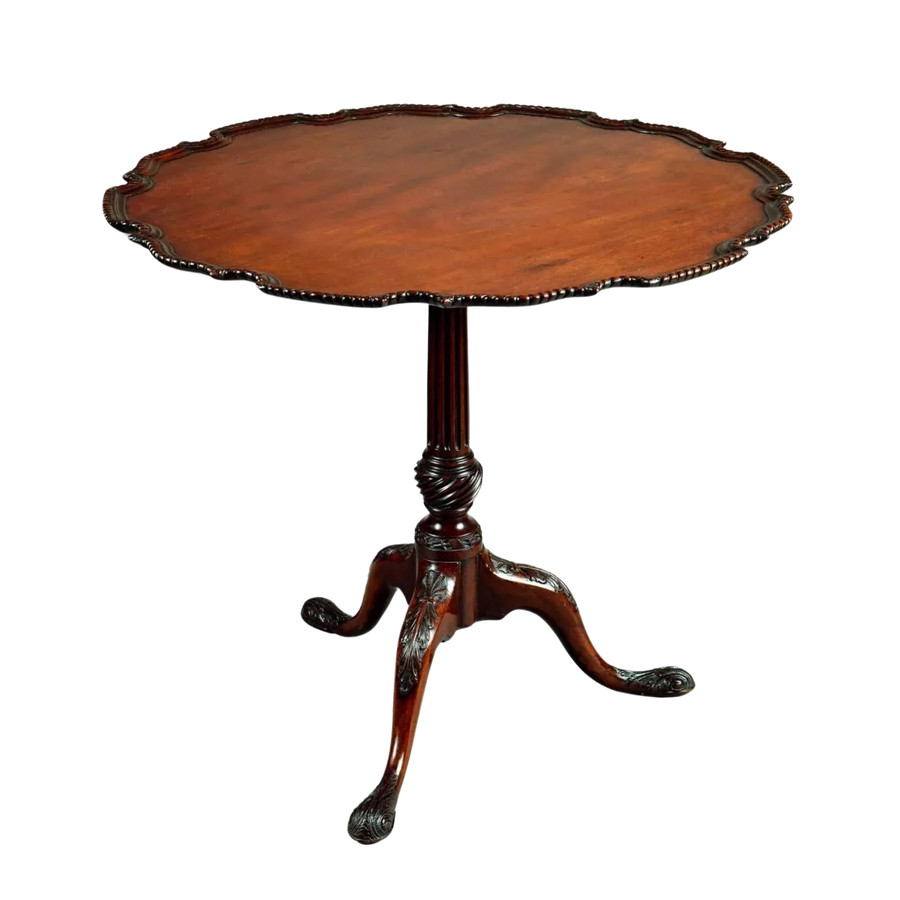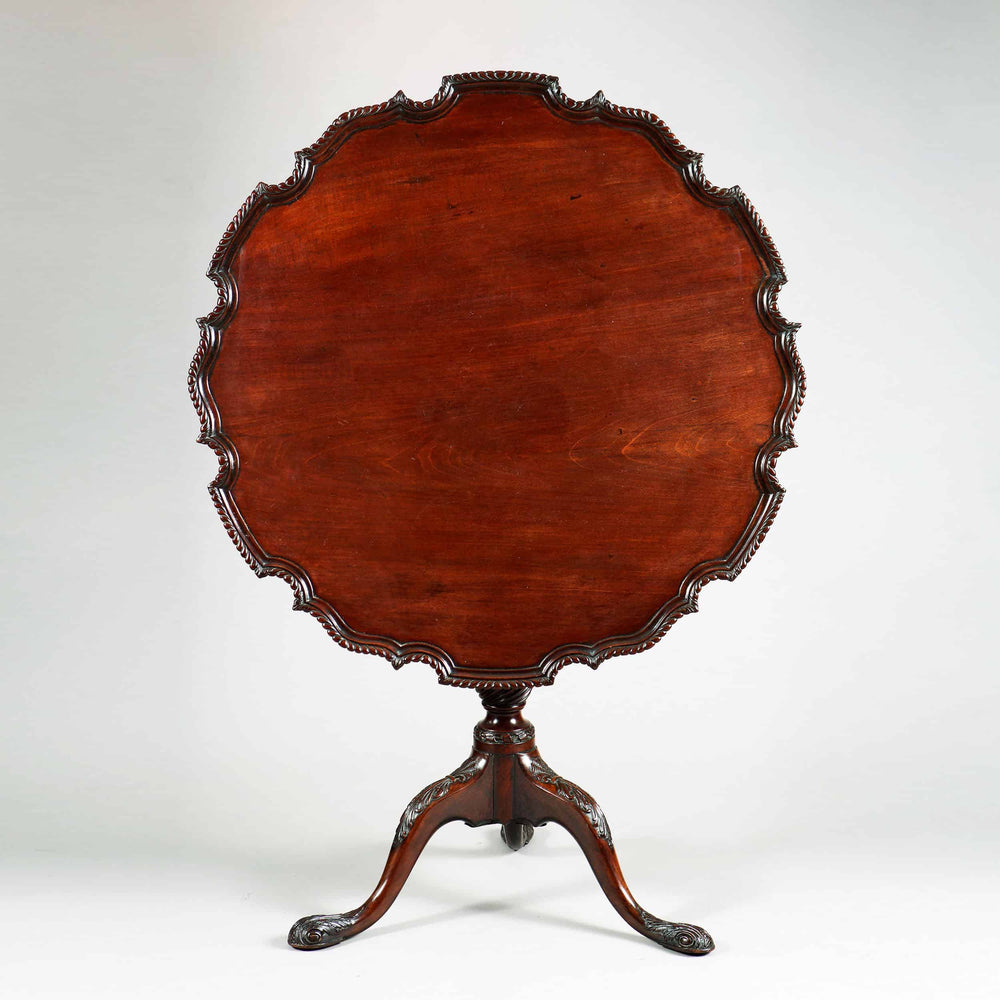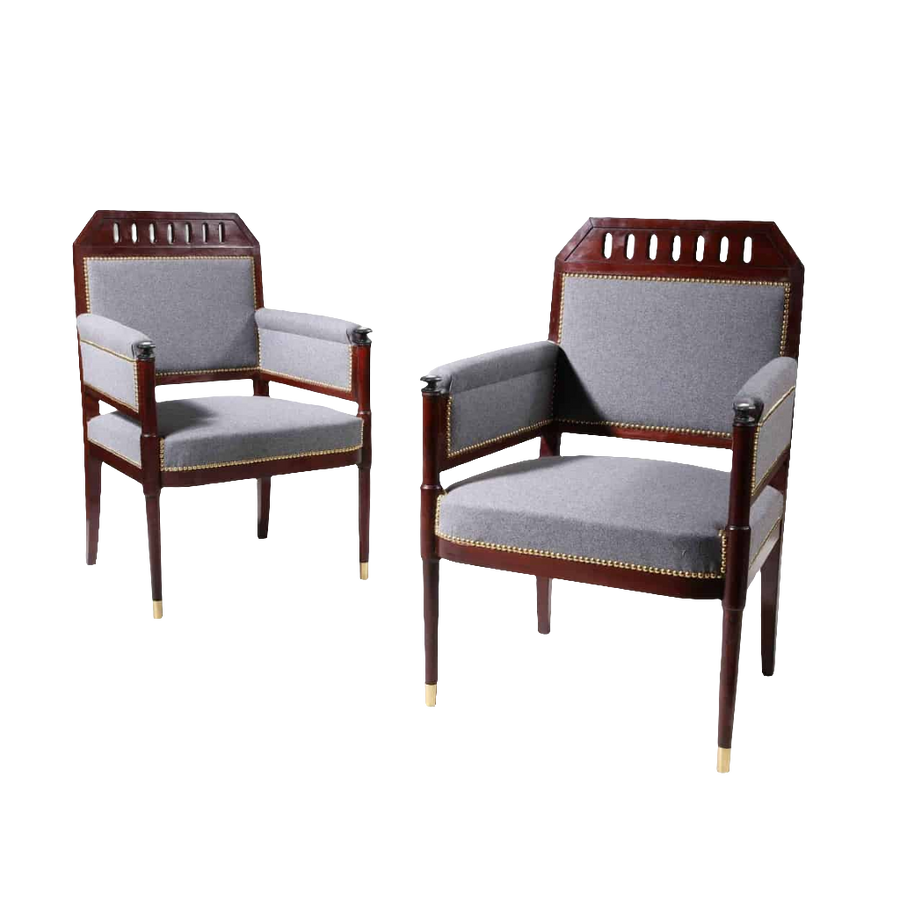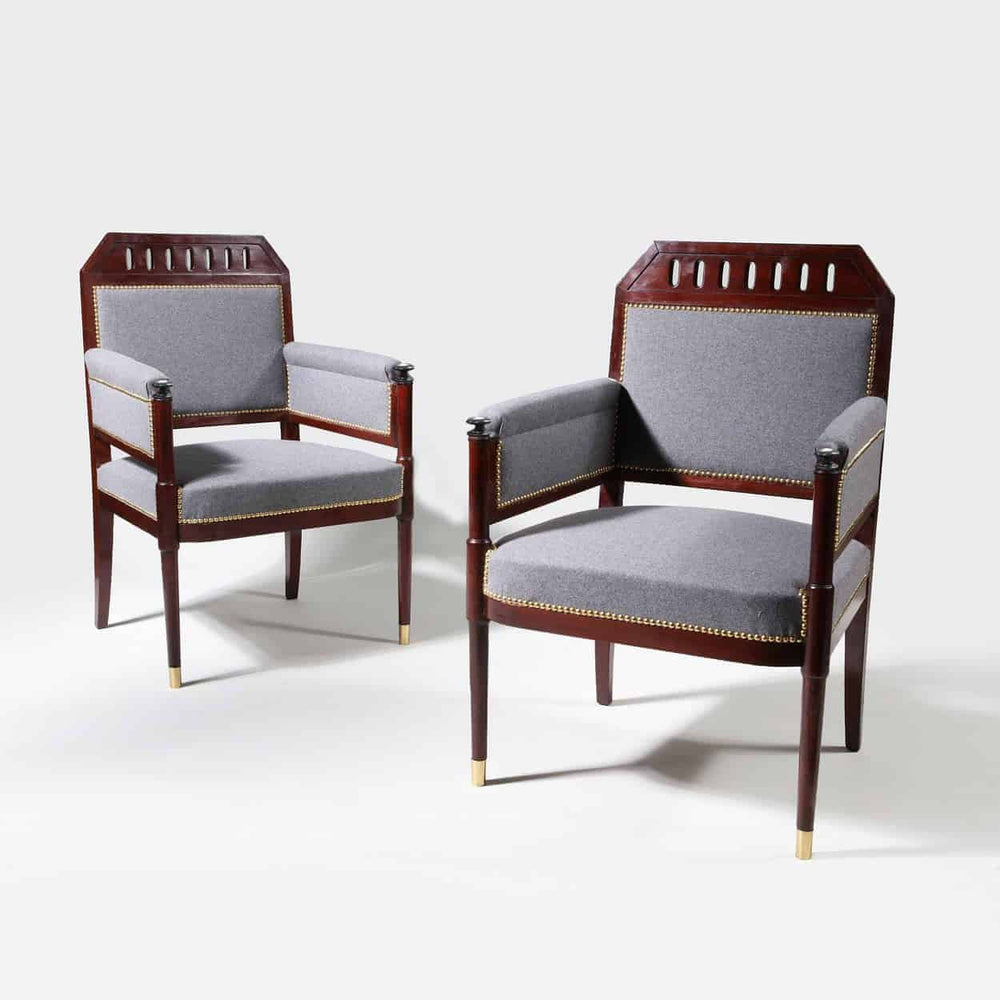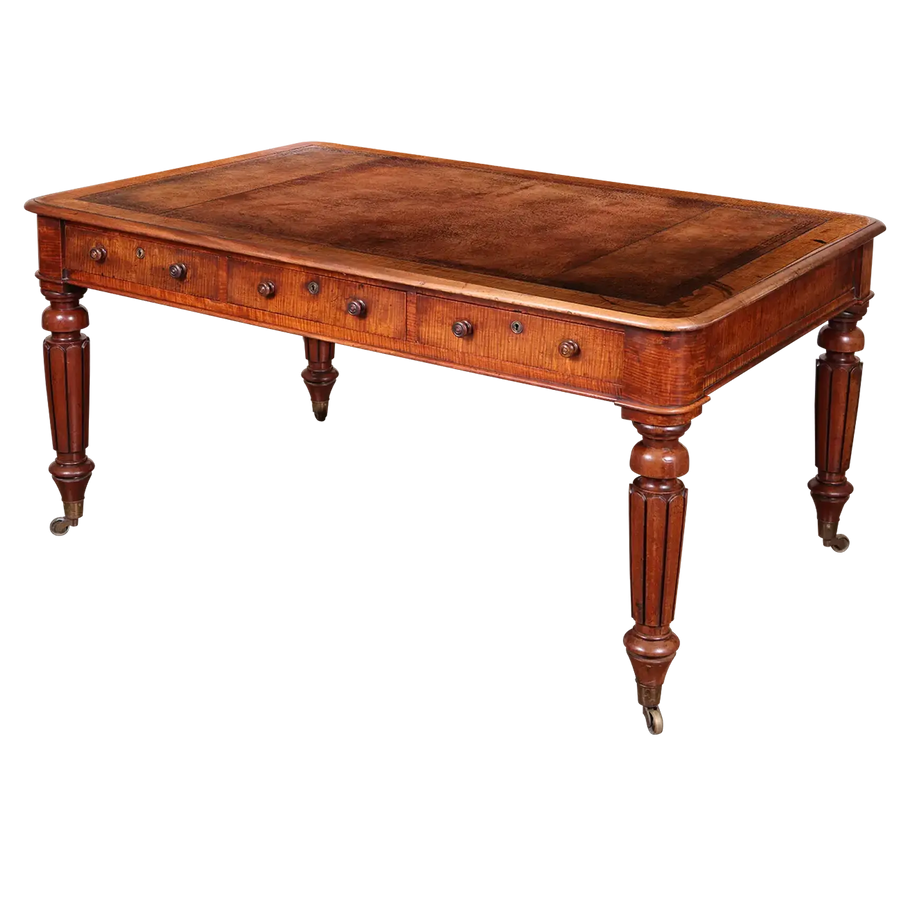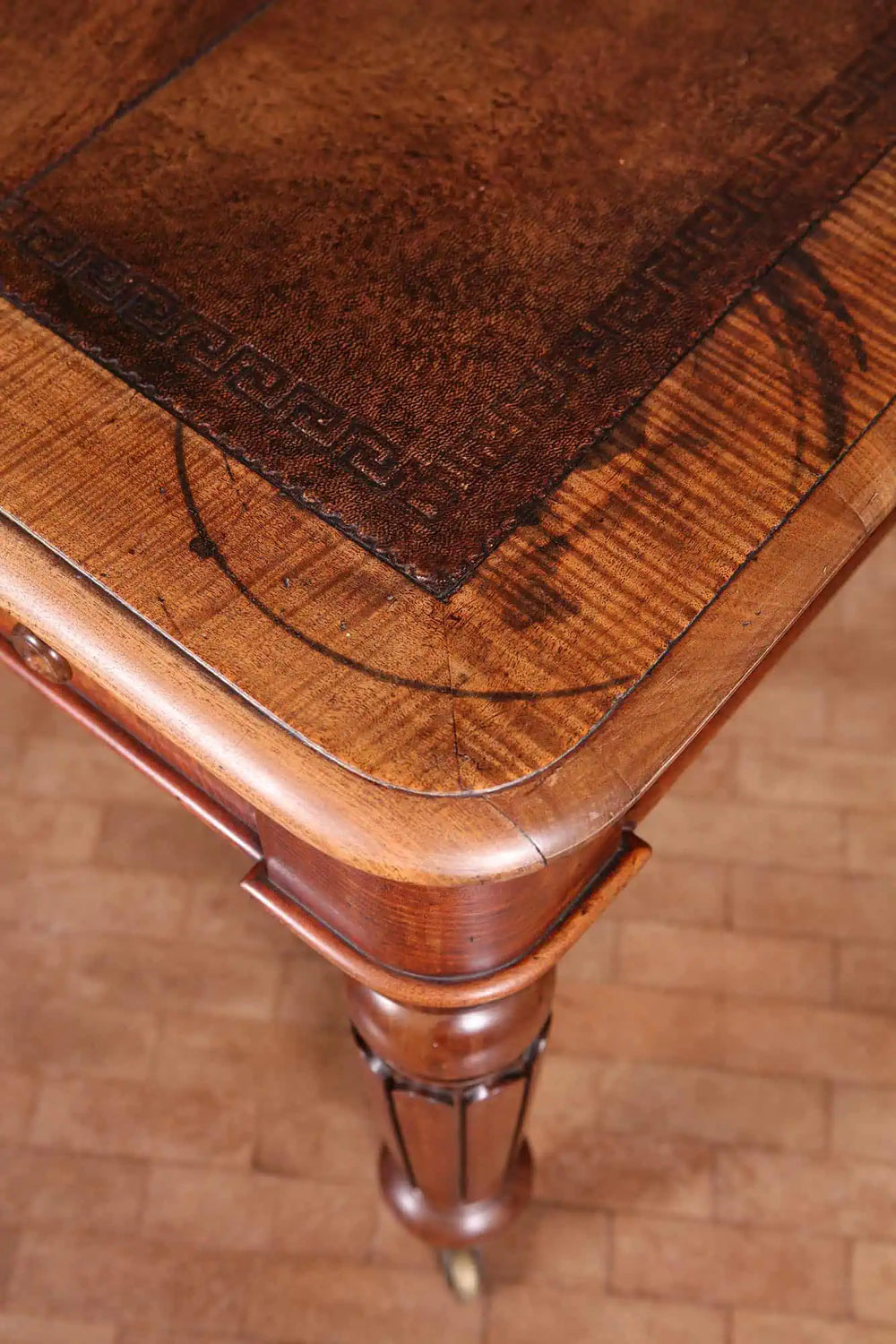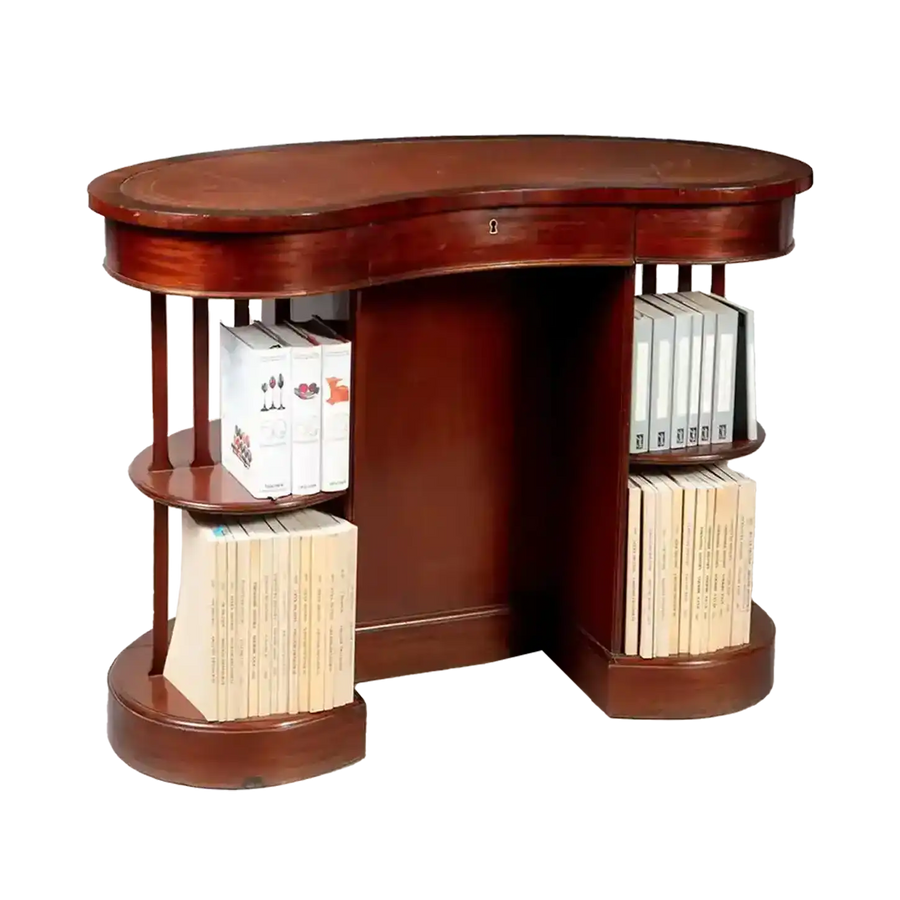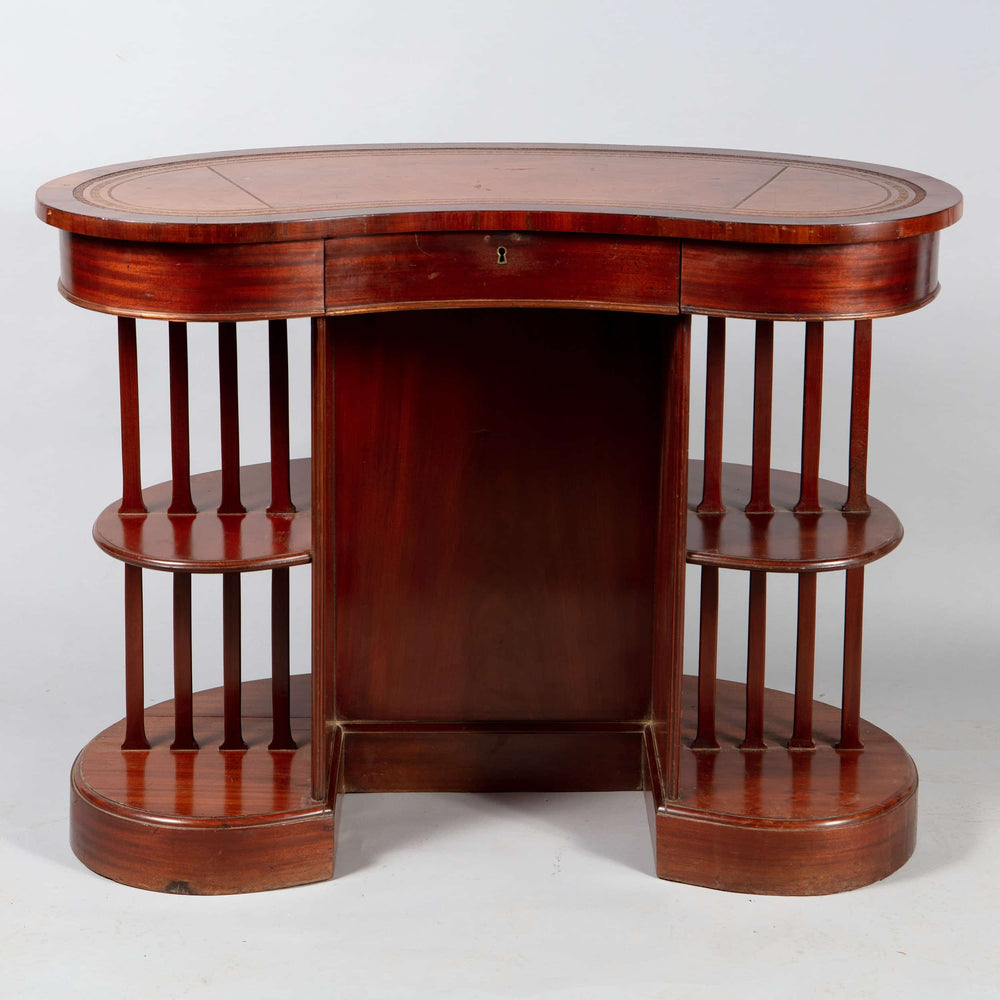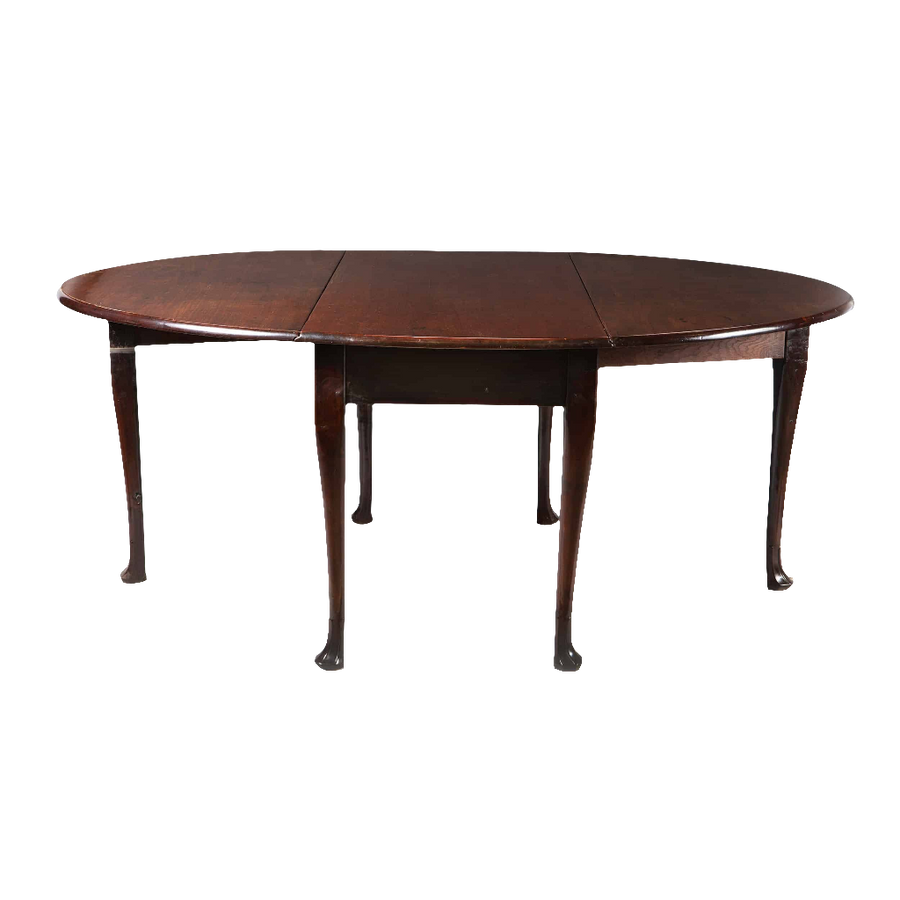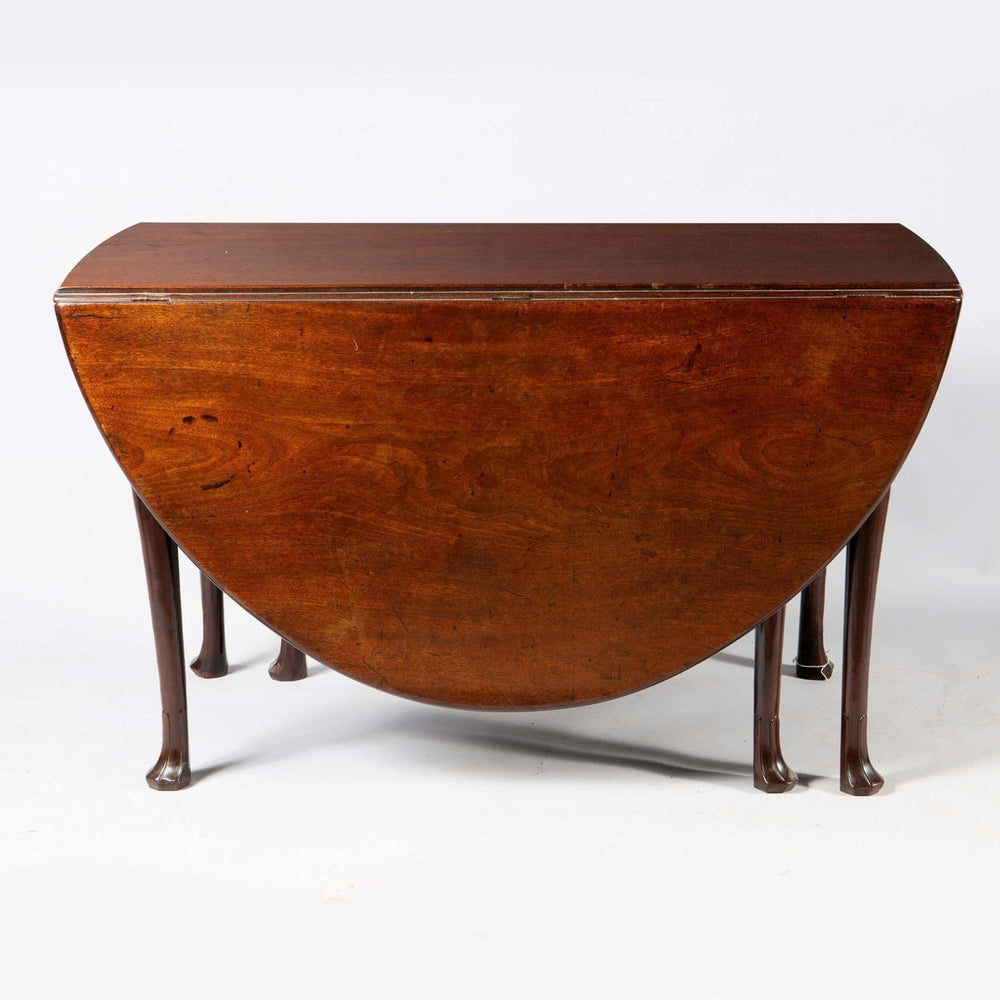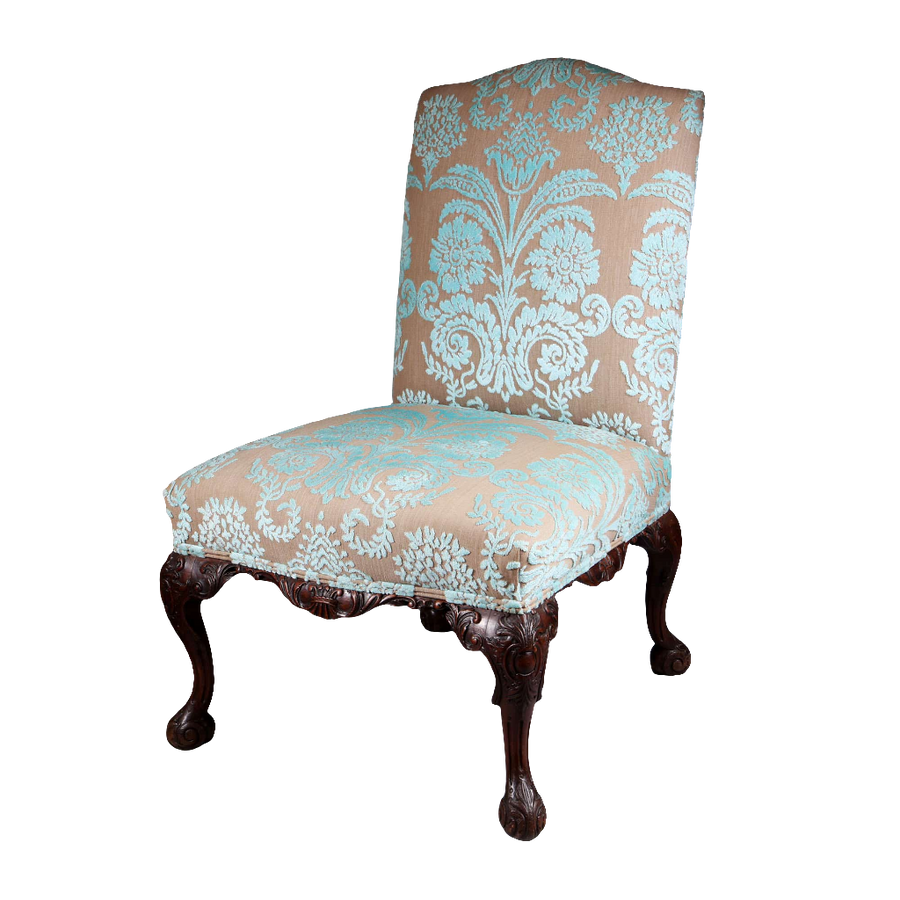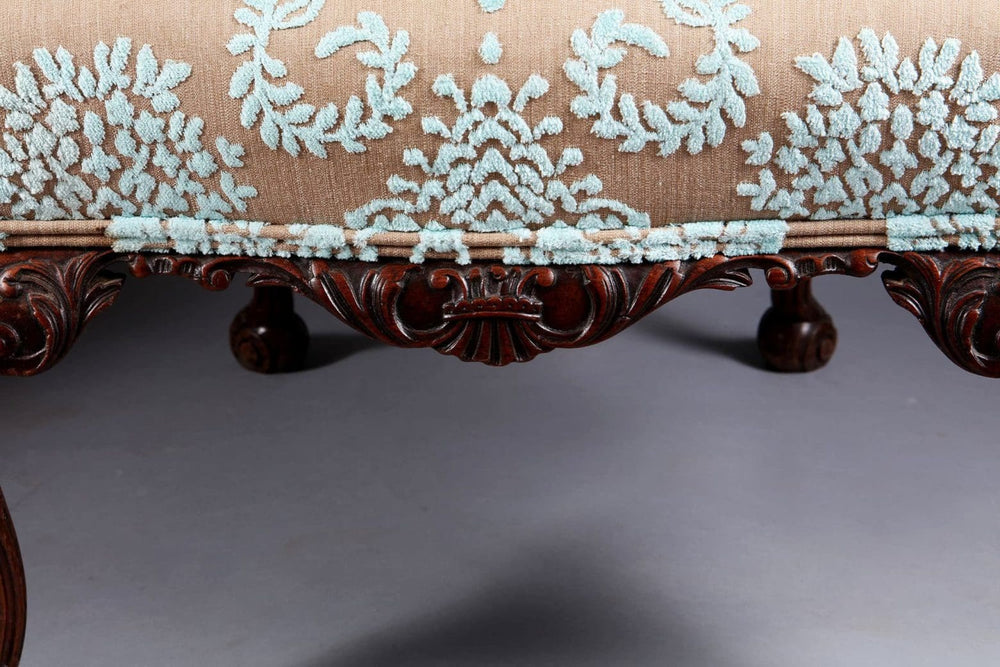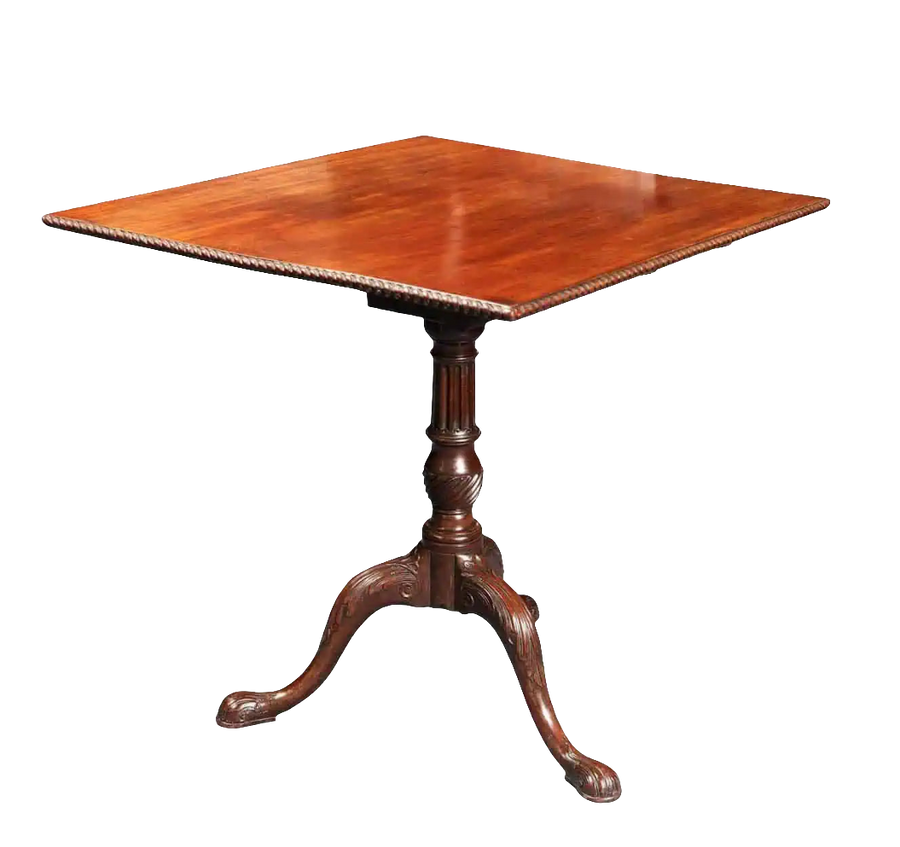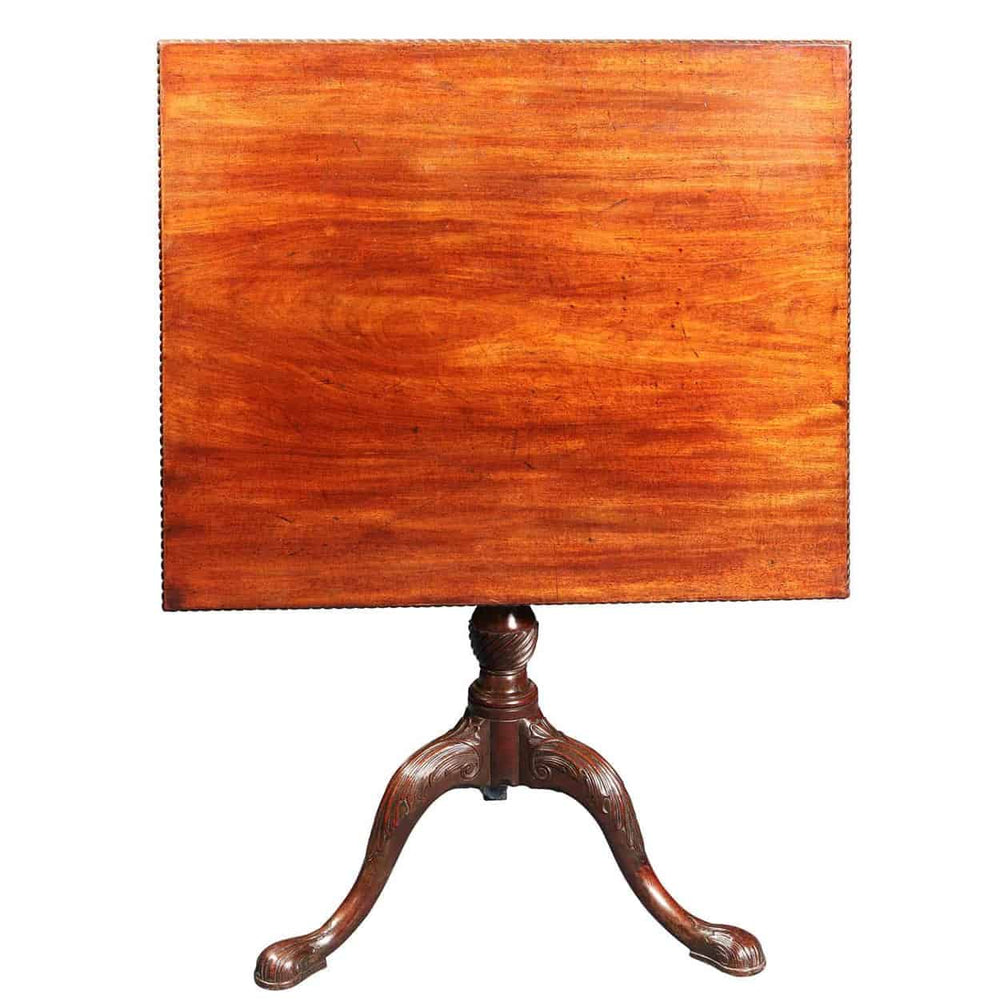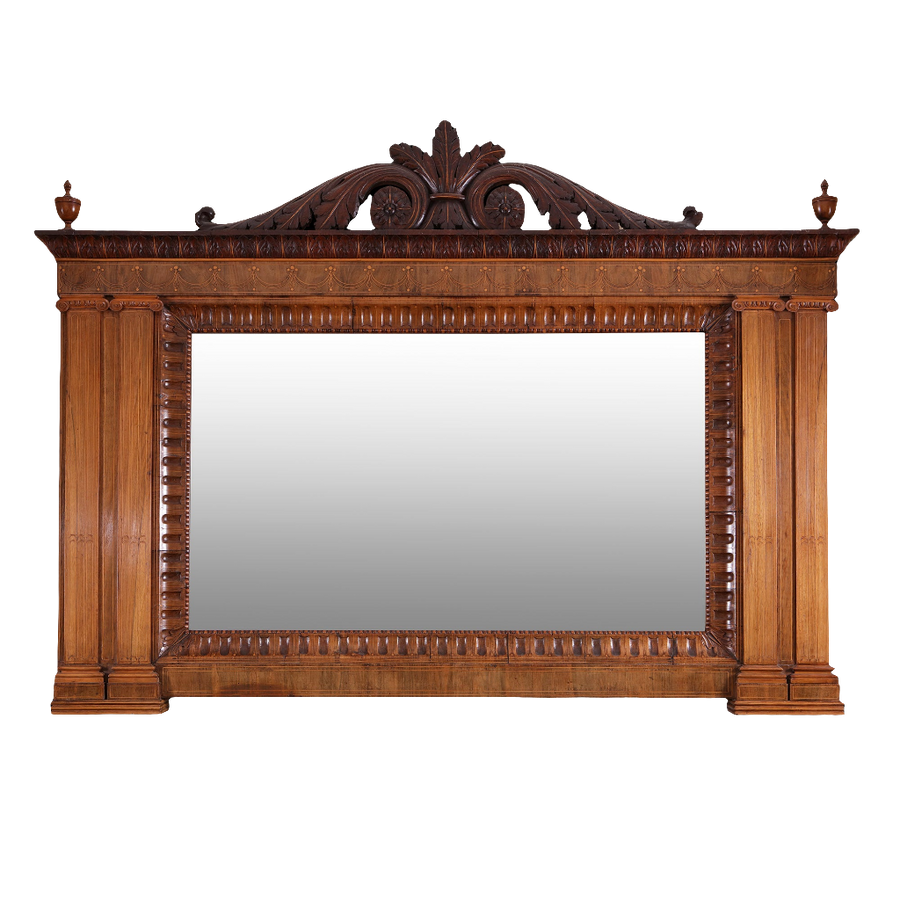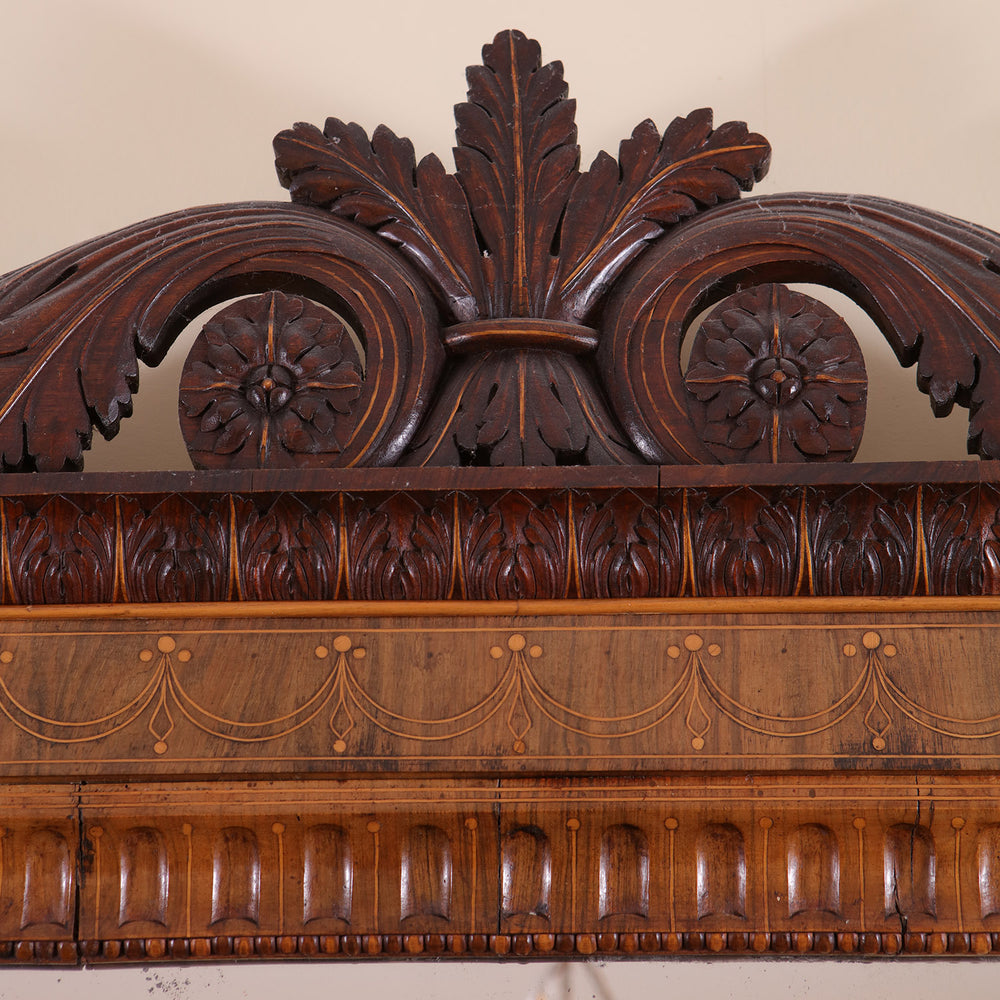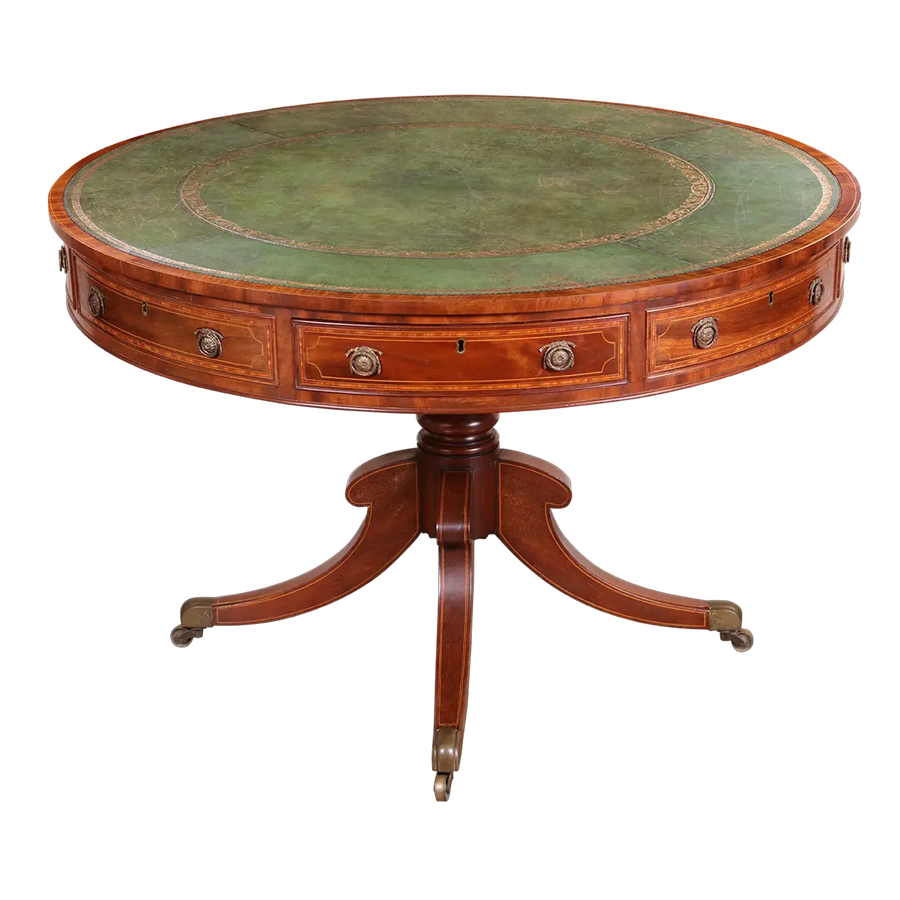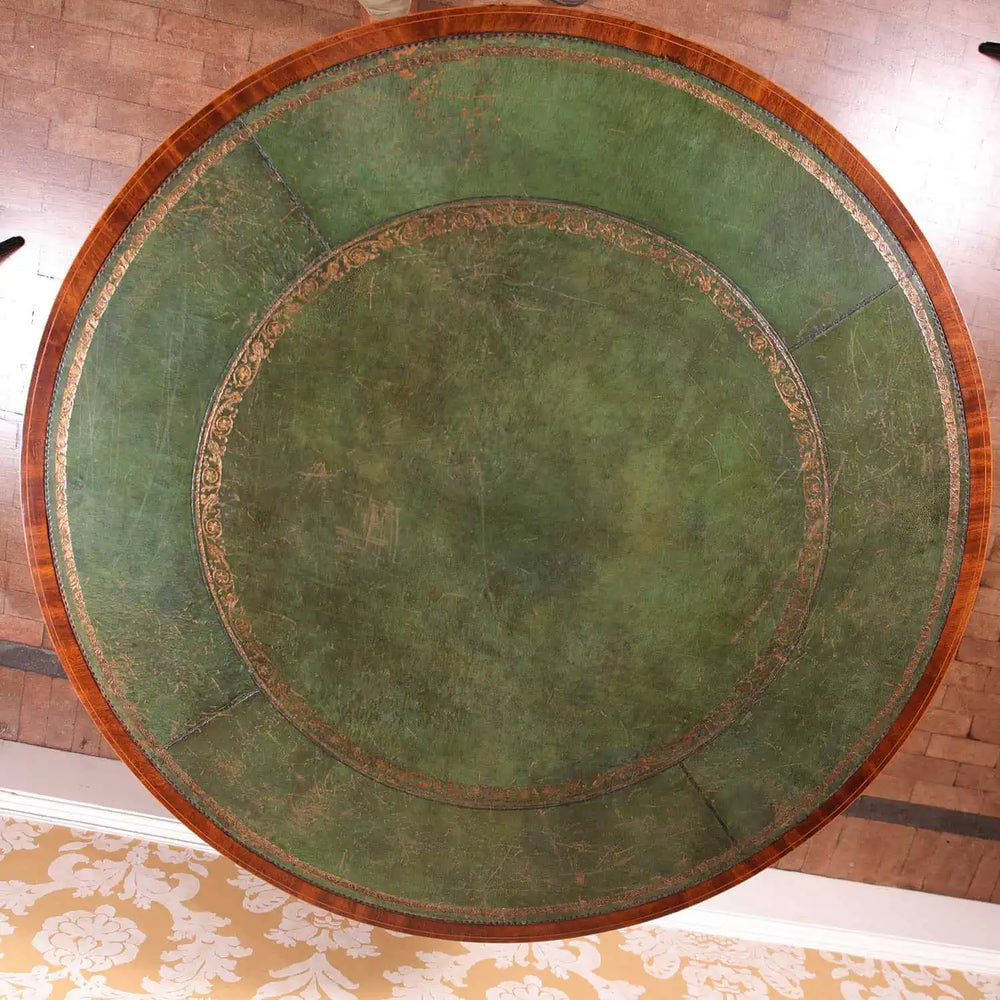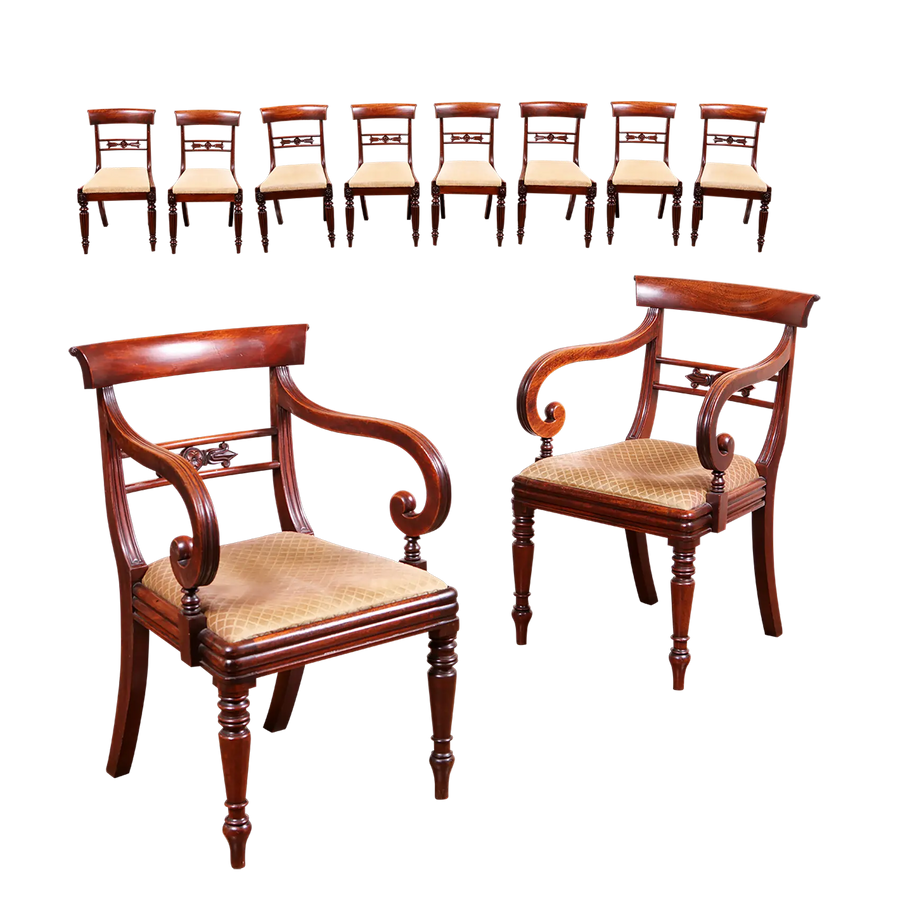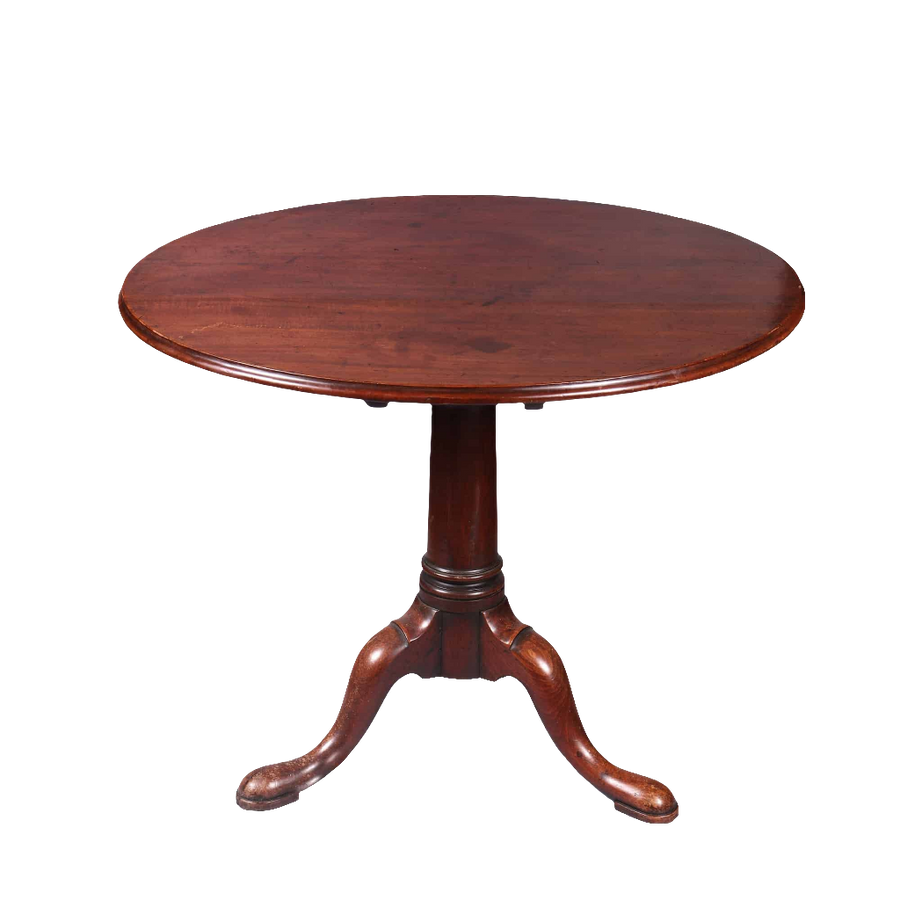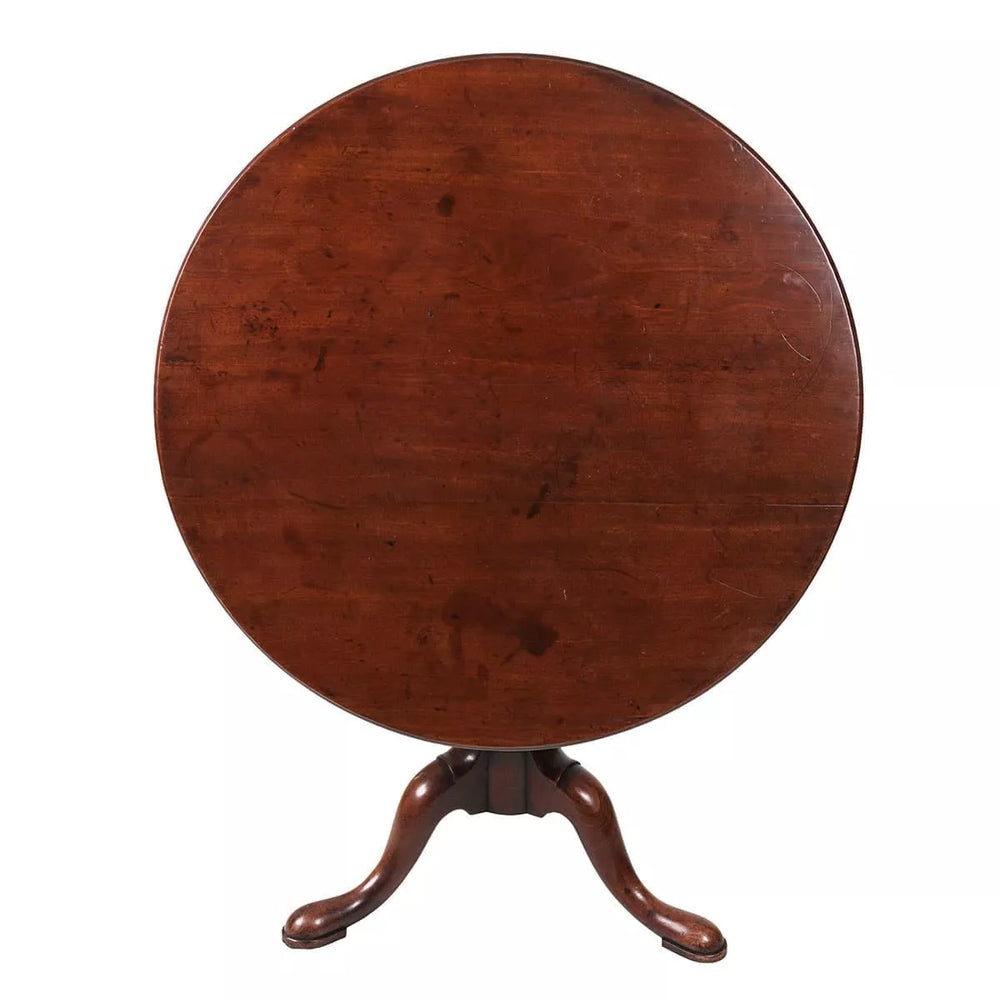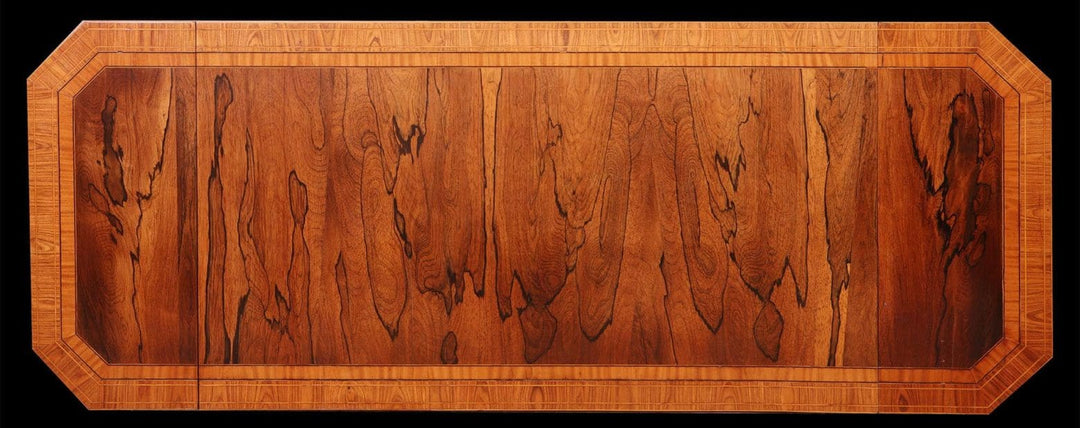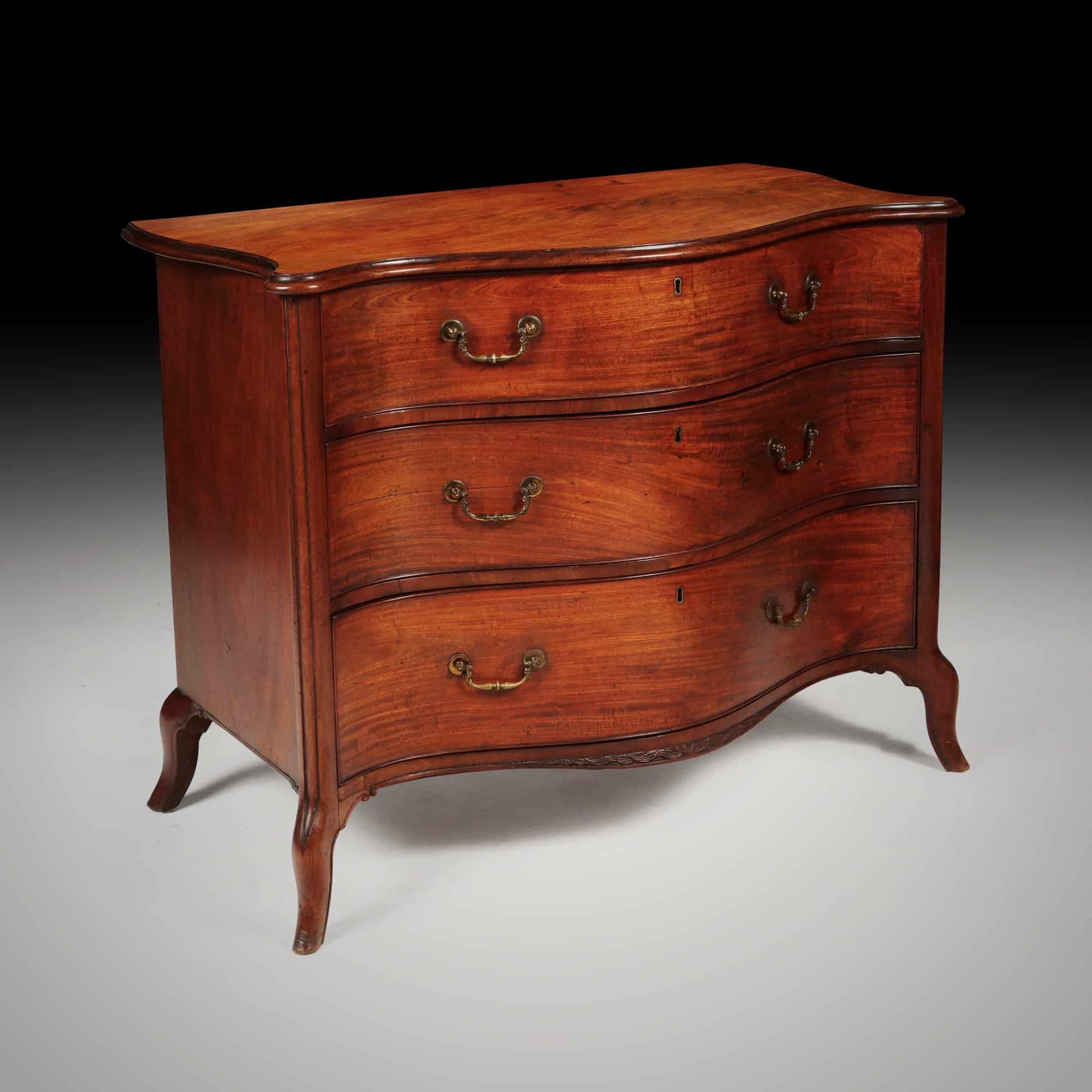
By the early 18th century, mahogany had replaced walnut as the pre-eminent cabinet wood in England. Imported through colonial trade from the West Indies, Central America, and South America, mahogany quickly became the timber of choice for fine furniture. It offered qualities unrivalled by native hardwoods: great strength, resistance to splitting, wide boards largely free of knots, and a deep, lustrous colour that improved with age and polish.
Origins and Trade
Although small quantities of mahogany were known in England by the late 1600s, it was in the early 1700s that large-scale imports transformed furniture-making. Jamaica, Honduras, and Cuba were major sources, with Spanish and British merchants bringing shiploads of timber across the Atlantic. Mahogany’s workability made it ideal both for robust solid forms and for highly decorative veneers, and it soon became a mark of quality and prestige.
Decorative Cuts and Types of Mahogany
Cabinetmakers quickly realised that different cuts of mahogany produced strikingly varied effects, allowing them to enhance the grandeur of their designs:
-
Flame Mahogany – Taken from the crotch of the tree where trunk meets branch, flame mahogany displays dramatic, flame-like figuring, often reserved for the best veneered commodes, card tables, and bookcases.
-
Plum Pudding Mahogany (Acajou Mouchetté) – Distinguished by its dense, irregular “spotted” figuring, resembling a rich plum pudding, this decorative cut was particularly fashionable in the mid-to-late 18th century for veneers.
-
Crotch Mahogany – Another cut from the branching point of the tree, crotch mahogany yields bold, swirling patterns, bringing movement and depth to table tops and cabinet panels.
These richly figured cuts allowed cabinetmakers to create furniture of dramatic visual appeal, often combining solid mahogany frames with carefully chosen show veneers.
Cabinetmakers and Mahogany in England
The rise of mahogany coincided with the golden age of English cabinetmaking. Thomas Chippendale used it to realise his most ambitious Rococo and Neoclassical creations, from intricately carved chairs to monumental bookcases, as illustrated in his Director. Gillow of Lancaster and London built their reputation on the quality of their mahogany work, supplying refined dining tables, writing furniture, and chairs that remain highly sought after today. William Vile, John Cobb, Ince & Mayhew, and Robert Adam’s circle of designers also embraced mahogany, elevating it into the standard bearer of Georgian taste.
From Walnut to Mahogany
Walnut had been the dominant cabinet wood of the late 17th and early 18th centuries, particularly for veneered furniture in the William and Mary, Queen Anne, and early Georgian styles. Burr and oyster walnut created elegant decorative surfaces, but the timber had natural limitations: it grew in relatively small sizes, was prone to worm, and lacked the strength required for larger, more ambitious designs.
Mahogany, by contrast, arrived in England in wide planks and great lengths, allowing cabinetmakers to construct larger pieces such as extending dining tables, library bookcases, and tall chests of drawers without the need for excessive joints. Its strength also enabled deeper carving, sharper detail, and more sculptural ornament. By the 1730s, mahogany had decisively overtaken walnut in fashionable taste, ushering in a new era of design that defined English furniture throughout the Georgian period.
Legacy
By the mid-18th century, mahogany was firmly established as the hallmark of refinement and status in English interiors. Its durability, polish, and adaptability ensured it remained the wood of choice throughout the Georgian period, continuing to shape the identity of English furniture well into the 19th century.




